
The Phone-Free Future of High School Education
A peek into student life at San Mateo High School, where phones are banned, and what this could look like for M-A. Read more on pg. 8.


The Phone-Free Future of High School Education
A peek into student life at San Mateo High School, where phones are banned, and what this could look like for M-A. Read more on pg. 8.
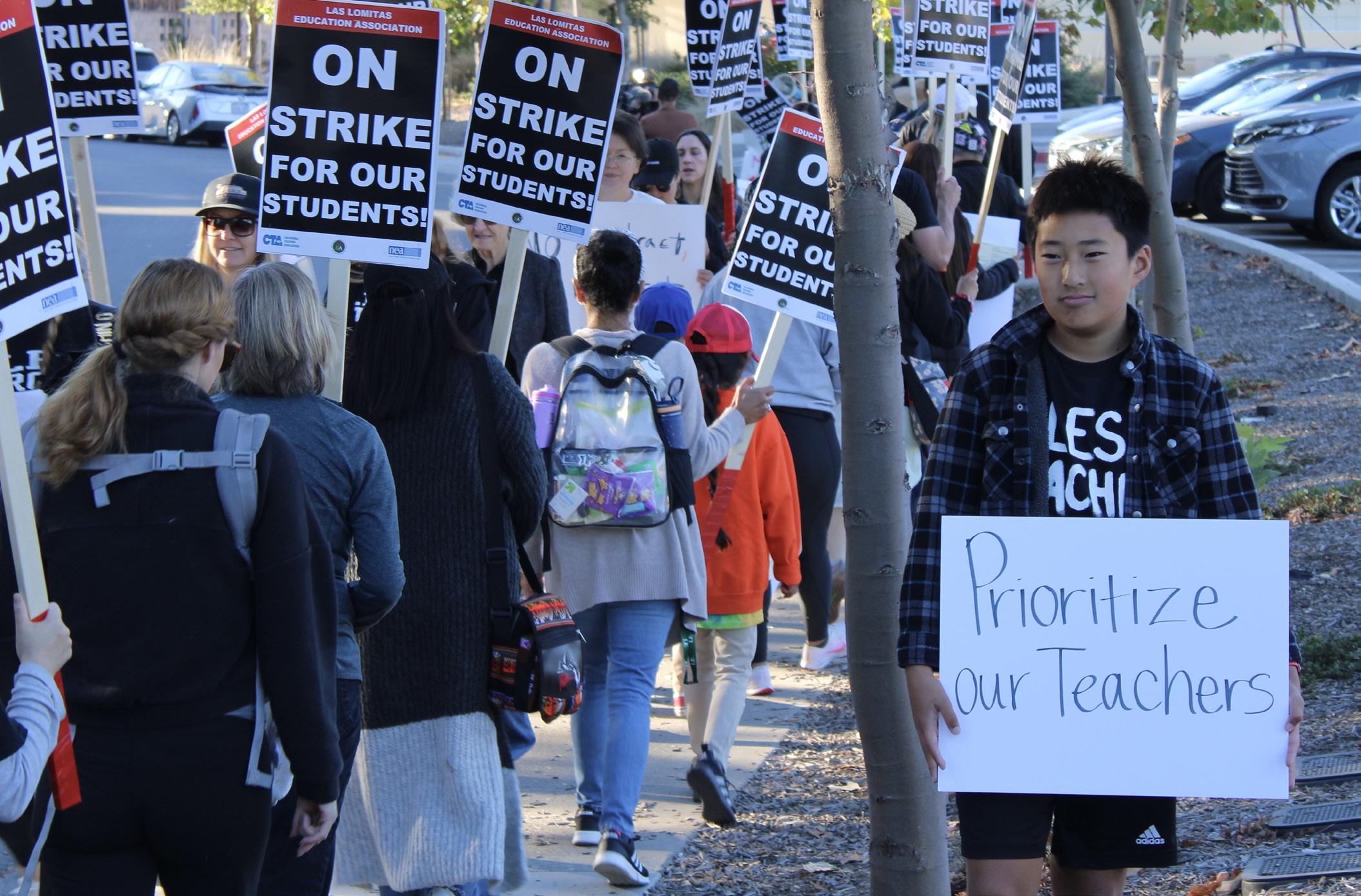

Bears Raise Over 250,000 Pounds of Food for Annual Distribution Day
Editors-in-Chief
Celine Chien, Ben Siegel
Culture & Features Editor
Celeste Zucker
Events Editor
Lindsay Park
Copy Editors
News Editor Ameya Nori
Sports Editor Tessa Ellingson
Social Media Manager Allegra Hoddie
Morgan Baudler, Rose Chane, Gaby Foster, Isabel Habibi, Becca Koenig, Jenna Lee, Maeve Miller, Huraman Orujov, Varsha Sripadham, Ella Thomson
Staff Writers
Oliver Bain, Caroline Baker, Delilah Bellis Rivera, Taylor Bentley, Katelyn Chao, Aliyah Chowdhary-Fitton, Paulina Cisneros Arreguin, Ilaria Cline, Leah Collins, Kitty Cormican, Mateo Cuellar-Koh, Anna Dearing, Farah Ghajar, Nelson Gutierrez, Alessandra Hartwig, Louisa King, Kritya Kiran, Akemi Kwan, Bailey Lanier, Colin Lee, Lia Lev, D’Anjou Libunao, Eileen Liu, Siboney Lynch, Liri Maoz, Sophie Marks, Karen Martinez, Abby Medin, Arjun Mitra, Teagan Murphy, Joe Pagee, Julinka Pang, Zara Parekh, Alisha Parikh-Briggs, Santi Quesada Tevis, Emily Pecore, Ellie Rosen, Micaela Rubinsky, Alli Schindler, Caitlin Smith, Tatiola Sobomehin, Hana Suzuki, Charlie Tobin, June Wagner, Leilani Wallace, Ben Warner, Ivy Watrous, Jonathan Weeks, Benji Weiss, Lilia Wilkiewicz, Amari Witt, Jovi Wong, Weycene Yang, Miya Yu
Advisor John McBlair



New year, new Mark!
It doesn’t snow at M-A, so we’re bringing a winter wonderland to you through this issue of The Mark. Our color scheme of cool blues and frosty grays compliments the warm, lively community in and around M-A that we’re highlighting in this edition.
We have much to celebrate from last semester: the 25th annual Canned Food Drive (pg. 34), the success of our fall sports teams (pg. 12), and a hard-fought raise for local teachers (pg. 21).
These exciting events keep us grounded, but only when we’re fully present to experience them: perhaps we’re missing out on such moments because we’re too distracted by our screens. Is it time to remove phones from schools for good? Read more to learn about a local high school that has already done so (pg. 7).
Stay connected with us by checking our website, machronicle.com, and following our Instagram and TikTok @machronicle.
Cheers, The Editorial Board
designed by Eileen Liu

by Rose Chane
by Micaela Rubinsky

“Baseball is my whole world,” Bob Melvin '79 said. Melvin is a former Major League Baseball catcher, a longtime coach, and the current general manager of the San Francisco Giants.
At M-A, Melvin was a three-sport athlete: he played basketball, golf, and baseball. But, when scouts started to attend his games, he began focusing solely on baseball. By his senior year, his batting average was .529.
After one year catching for the Golden Bears at UC Berkeley, Melvin was selected by the Detroit Tigers as the second overall pick in the 1981 MLB draft. “It all happened very fast,” he said. “Before I knew it, I was going to Florida for spring training with the Tigers.” Melvin was soon traded to the San Francisco Giants and played for seven MLB teams over 10 seasons.
Melvin then spent five years coaching in the Minor and Major Leagues and two as the Arizona Diamondbacks bench coach. “I got into coaching because it was really all about what I knew,” he said.
He became the manager of the Seattle Mariners in 2003 and then managed the Oakland Athletics for 11 seasons. He managed the San Diego Padres for two seasons before transitioning into his current position as the San Francisco Giants manager in 2023. “Every time I walk into that ballpark, it reminds me of when I was a kid. I feel a great sense of responsibility managing the team in my hometown,” he said.
Melvin’s advice to current M-A student-athletes: “Have fun with what you’re doing because sports are really meant to be fun. Who knows how long your career will last, so enjoy it to its fullest and know it’s preparing you for the rest of your life.”
At just 34 years old, Jamila Reinhardt '07 has accumulated an impressive career: she played in the American rugby union and served as an officer in the U.S. Navy. Now, she’s a firefighter for the San Francisco Fire Department.
“Growing up, I was into contact sports that got my adrenaline pumping,” Reinhardt said. She played basketball at M-A.
While studying at the California Maritime Academy in Vallejo, Calif., Reinhardt joined a rugby team called the Sea Hags. “The sport just came so naturally to me,” she said.
Reinhardt graduated from the academy in 2012 and was assigned to active duty in Ghana, Senegal, and Spain.
“After the first year of being in the military, I decided to look up opportunities to join a women’s rugby club team,” she said. “I was invited to go on tour with the U.S. Women’s Rugby Team to play against Canada in 2015.” However, just before the game, Reinhardt broke her foot, briefly pausing her rugby career.
Reinhardt’s first game back was in Utah, where she caught the attention of U.S. Women’s Rugby Team coach Pete Steinberg. “He was preparing a team of players for the World Cup squad, and he said he wanted to see me on the pitch,” she said.
Reinhardt competed against Ireland in the 2017 World Cup with the U.S. Rugby team. “We were all there just to be the best we can be,” she said.
After graduating from the City College of San Francisco’s fire academy in 2023, Reinhardt now works as a firefighter for the San Francisco Fire Department.
Reinhardt’s advice to those wanting to join the Navy or get into sports: “Start pushing yourself to do more. Treat each activity as a stepping stone to your end goal.”
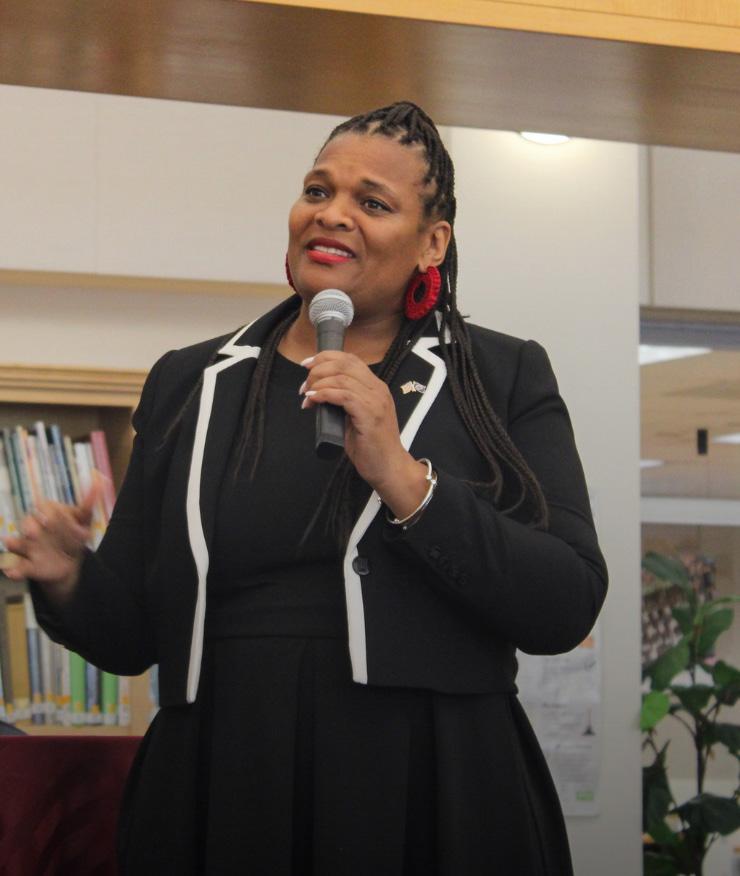
by Celeste Zucker

“I’ve always wanted to make sure things were just. That was my North Star since high school,” Zakiya Carr Johnson '92, the Chief Diversity and Inclusion Officer for the U.S. Department of State, said.
“I remember my government teacher telling my class, ‘You are the future leaders of this country.’ I looked around and I was the only Black woman in the room. There was nobody from my city and no one who looked like me, but we do become leaders,” she said.
After graduating from M-A, Carr Johnson attended Howard University, where she majored in communications. At a delegation of Afro-Latin American leaders, she attended a talk about human rights and racial discrimination. “It kind of blew my mind,” she said. “I saw dialogue between countries about issues that matter and people who were trying to find solutions.”
Carr Johnson lived in São Paulo for three years, advocating for the rights of Afro-Brazilian women at the Geledés Black Women’s Institute.
After returning to the U.S., she worked for the Inter-American Foundation supporting businesses in Venezuela and Ecuador, and created and directed the State Department’s Bureau of Western Hemisphere Affairs’ Race, Ethnicity, and Social Inclusion Unit.
Carr Johnson’s advice for students interested in diversity and inclusion: “Read a whole lot. Study news and news trends. Spend time with your thoughts about what you are reading. Whether it’s advising members of Congress, the president, or the United Nations, it’s important to be able to read, digest information, and consolidate it for other people.”
Hailing from the 2022 Forbes 30 Under 30 Retail & Ecommerce list of individuals “reinventing how we shop,” Chloe Songer '10 is doing precisely that.
Songer’s passion for solving the climate crisis took off when she helped pioneer Leadership’s Environmental Committee her sophomore year at M-A. “The Bay Area was a little bit more liberal and was willing to dive into this new environmental movement early,” she said. In her senior year, Songer represented the U.S. in the 2009 UNICEF Children Climate Change Forum.
Songer attended Duke University, where she majored in economics and minored in Chinese. “I realized that I needed to understand the way that our capital systems worked in order to be able to make change. Economics felt like a good base major that wouldn’t close any doors,” she said.
After graduating, she moved to Shanghai for a job in business development at Alexander Wang Group.
In 2018, Songer co-launched the first recyclable sneaker company, Thousand Fell, a company that recycles unused components to make new products.
by Celeste Zucker
Her second company, SuperCircle, helps a variety of large fashion brands like SKIMS and J.Crew recycle their products in exchange for store credit. “I’ve been fortunate enough to marry my passion for activism and climate conservation with my love for fashion,” Songer said.
Songer’s advice to aspiring climate change solvers: “Get involved locally—at M-A, your future college, and with city and state organizations focused on legislation. Even before you are 18, you can start to learn about legislation coming down the pipeline and join advocacy groups to campaign for changes.”

“It was a little nerve-wracking when I showed up to M-A’s swim tryouts because I was the only TIDE student,” senior Justus Howell said. “I didn’t know anyone there other than the coach.”
TIDE Academy students have been able to participate in M-A athletics since 2022. TIDE, with a student body of over 200 students, doesn’t offer any varsity athletics programs.
As a result, TIDE signed an athletics agreement with M-A for its students to meet new friends while playing sports in a high school environment.
For Howell, joining the M-A swim team meant the opportunity to participate in larger meets with potential college scouts. Howell, who has been swimming for a club team since he was six years old, tried out for the M-A team as a sophomore. “Everyone was really nice and inviting,” Howell said. “It didn’t take too long to find my little group.”
Senior Adam Lyle, a former TIDE stu-
dent who has since transferred to Woodside, played on both M-A’s tennis and wrestling teams. “Tennis was a big part of what I liked to do, and it was just easier to go to M-A rather than some private place,” he said.
Senior Ella Chamness had never played badminton before but decided to join M-A’s team to fulfill her P.E. credit requirements. “One of my favorite parts about the team was how supportive everyone was,” she said.
For Chamness, however, one of the challenges of playing a sport at a different school was the commute. “It is a big time commitment,” she said. “I spent a lot of time driving to and from my school for the badminton practices.”

“It was really essential for me to have a driver’s license,” Lyle added. “I’m not sure how students without a car get to practice.”
Beyond playing their sport, TIDE athletes enjoy the opportunity to meet new
people. “At TIDE, it’s such a small community, and, when you go to one of these bigger schools, you meet so many more people,” Lyle said.
“The set of students I see who engage in the sports agreement really enjoy it,” Chamness said. “They seem to really have embraced the sports culture and made a lot of close friends.”
“I like being able to connect with my teachers in the smaller school setting of TIDE but then have a bigger social life outside of that,” Chamness added.


Without phones, San Mateo’s students are more focused and sociable.
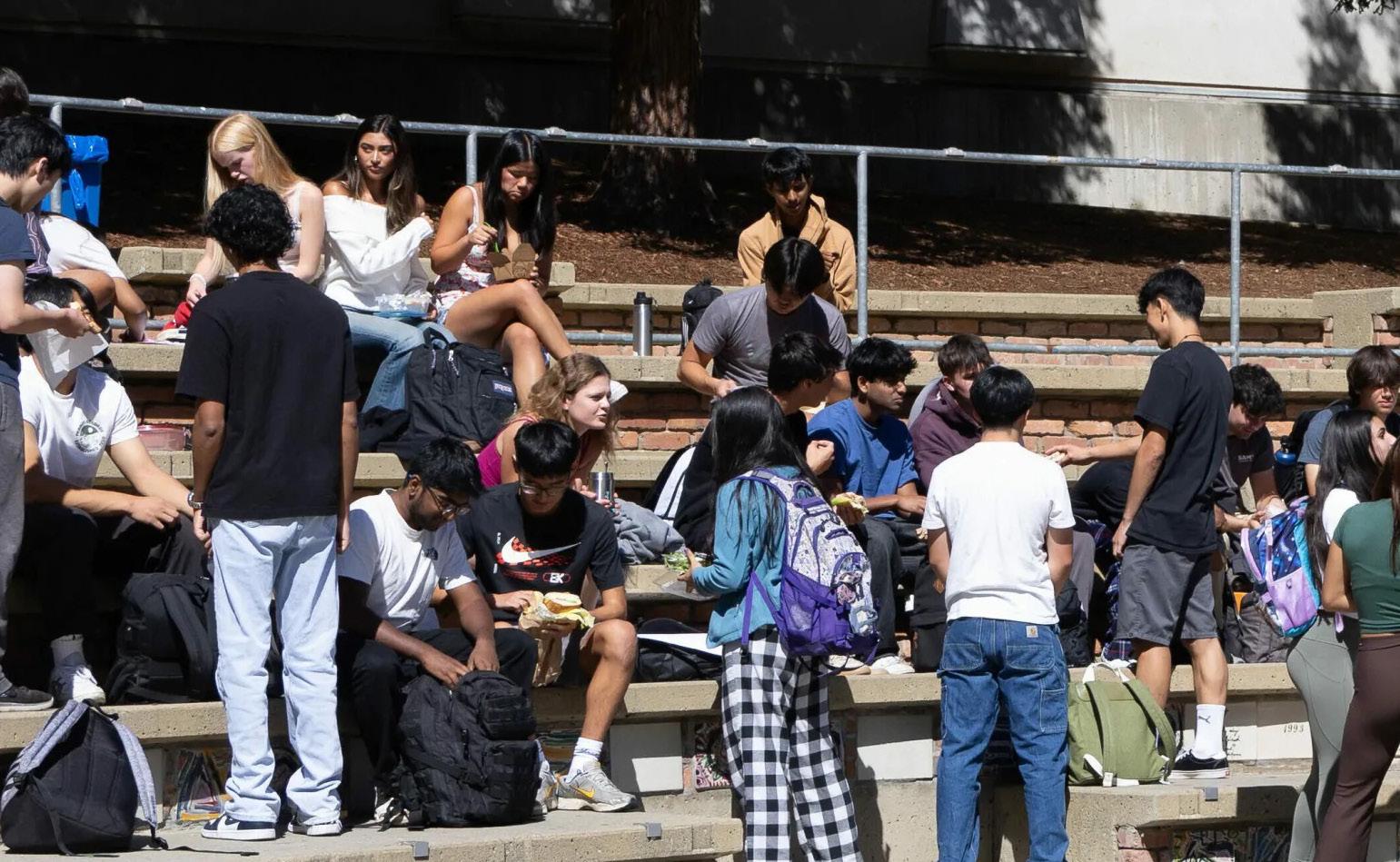
Five years into a policy prohibiting cellphone use during school hours, San Mateo High School’s students are focusing better and socializing more.
“In the morning before class, kids are on their phones,” English teacher Dave Pirie said. “Then, at lunch, it looks like a '90s movie. People are talking to each other, sitting in circles, and even playing spike ball. It’s just nice to see kids enjoying each other’s company.”
Leia Asanuma, who used to work at M-A, has been teaching at San Mateo since 2021. Teaching with San Mateo’s phone policy is a “world of difference,” she said. She’s observed fewer interpersonal conflicts and finds students are more engaged in class.
“I don’t have to fight with kids about using their phones in class or worry about phones falling out of their pockets. The focus is on learning,” she said.
San Mateo uses Yondr pouches, which have magnetic locks. Students lock up their devices—including smartwatches—at the start of school, and teachers and staff have magnets to unlock them at the end of the day. In the same way students are expected to have a pencil and personal computer, a Yondr pouch is a necessary material in a San Mateo backpack.
“You actually see their faces”
“We have a lot of noise during lunchtime because students are interacting with each other. The halls are a lot more boisterous,” Asanuma said.
“I don’t think they like Yondr, but I don’t think kids like homework that much either,” Pirie said. “It’s a rule, and teachers love it, and overall it’s better for the academic and social atmosphere.”
Teachers and staff have found that students across campus have become more involved in activities and socialize more. “I think it’s a relief for them to not be so wrapped up in their cellphones at school. They feel better and safer interacting with their peers and joining sports and clubs,” Assistant Principal Gary Hong said.
“Students can play games or watch videos on their Chromebooks, but I think the time spent scrolling through DMs and looking at Snapchat and Instagram is cut down significantly while they’re on campus,” Principal Yvonne Shiu said. “They talk to each other instead.”
Junior Travis Okimura started using Yondr during his freshman year at San Mateo. “At first, I thought it was bad because I had to put my phone away, and before high school, I used my phone every day,” he said.

Over time, Okimura started to enjoy phone-free school days. “I got to connect better with my friends,” he said. “I would like to be allowed to use my phone at brunch and then Yondr back up because sometimes you just need to check to see if you have any messages.”
Other students opposed the policy entirely. “I feel like we should be allowed to use our phones because, for some people, it’s another form of socializing,” junior Katrina Capeta said.
Junior Gabby Xiao transferred from San Mateo to Aragon High School this year. She said San Mateo’s phone policy played a large part in her decision.
“When I found out about Yondr, I thought it was really dramatic and honestly really weird. It just seemed like we didn’t need it, and they made a big deal about nothing,” Xiao said.
Xiao shared mixed feelings about the policy. “I guess not having my phone during classes made me focus more, like I didn’t have any distractions, so I understand that,” Xiao said. “But there were times during lunch or rallies when I wanted to take photos of my friends and record my high school experience and I couldn’t.”
“I got kind of annoyed because sometimes my parents wouldn’t get it and be like, ‘Why don’t you get my texts?’ and I’m like, ‘I literally can’t see my phone,’” Xiao added.
“During in-school events like Halloween, spirit week, or grade level competitions, administration issues an exception for students to un-Yondr at lunch and take pictures,” Asanuma said. Shiu noted some students now bring digital or film cameras to take pictures at school.
Although San Mateo might look like a '90s movie at lunch, it travels back to the present when the last bell rings.
“Everybody is bumping into each other because they’re heads down on their phones,” Asanuma said. “Perhaps the urge is just staved off. People are very eager to be back on their phones.”
“In an emergency, students need to be able to listen to the adult giving directions instead of texting and not paying attention to what’s happening,” Shiu said. “Once everyone is safe, teachers can un-Yondr, and students can communicate with their parents.”
In case of drills and emergencies, San Mateo’s administration communicates extensively with parents through emails and phone calls.
Asanuma believes students are more aware of their surroundings now, which improves campus safety.
“Life existed before phones,” Shiu added. “Parents can drop things off for their students, and we can send a pass instead of parents texting them and disrupting class.”
“Pretty much any student can un-Yondr at any time,” Shiu said. “They come to the office and say, ‘Hey, can I please call my mom?’ They make the phone call, Yondr back up, and go back to class.”
is not calling your
Teachers have found that students are more engaged in class. “When you have your phone out on your desk, it’s so much easier to reach for it and get sucked in. When it’s in your backpack, that glowing screen is not calling your name,” Asanuma said.
“Yondr helps me focus more in class, but, at the same time, I still think about my phone,” Capeta said.
Despite improved focus levels and academic integrity, students shared they sometimes wish for more agency. “I think Yondr is really unnecessary because I’m pretty sure students are capable of staying off their phones,” Capeta said.
San Mateo conducted a pilot where 13 teachers volunteered to use Yondr pouches in their classrooms.
Gov. Gavin Newsom signed A.B. Bill 272 into law, explicitly authorizing school districts to regulate phone use during school hours.
San Mateo administrators and staff discussed implementing the phone-free policy with parents at town hall events.
San Mateo implemented Yondr campus-wide with money from its Parent-Teacher Organization and Foundation.
San Mateo’s main feeder district, San Mateo-Foster City Elementary, implemented Yondr.
The school continues to provide students with a new Yondr pouch each school year.
“Cell Phone Confiscation” for students caught violating the policy. Administration provides exception cards to certain students:
“No Phone on Campus” with a custom expiration date depending on the student.
Signed by Gov. Gavin Newsom in September, A.B. 3216 requires all California public school districts to develop a policy limiting or prohibiting cellphone use at school by July 1, 2026, and will reimburse district spending on the policy’s implementation. The bill cites international data on improved academic performance and test scores at schools with phone bans.
Currently, San Mateo is the only school out of 10 in the San Mateo Union High School District using Yondr. “I’m not sure Yondr would work at other schools. We all have our own personalities,” Shiu said.
“As an administration, a lot of our time is spent supporting our teachers with Yondr so they can do their jobs without interruption,” Shiu added.
M-A’s current policy states teachers should call home every time a student has their phone out during class time. This is rarely enforced, however, and students often use phones in class.
“If I [called home] every time I saw a phone, I would do nothing else,” M-A Precalculus teacher Arminda King previously told the M-A Chronicle
This year, 11 freshman teachers at M-A are testing a stronger policy. In their classrooms, attendance is taken through phone pockets to ensure all students put their phones away.
So far, the results are similar to San Mateo’s: students are focusing and interacting with peers more. “They’re getting further through assignments, and I feel like what I’m hearing in class is more complex and nuanced,” M-A freshman English teacher Erin Walsh previously told the M-A Chronicle
“Consideration” for specific circumstances, like a diabetic student checking their blood sugar with an app.
Students who forget their Yondr pouch can give their phones to the office without consequence.

While teachers have individual policies, none extend past the classroom, meaning students use their phones during passing periods, brunch, lunch, and even in the bathroom.
“I encourage other schools to be on board sooner rather than later because it really helps the overall development of our students,” Hong said. “It’s hard to stop technology from advancing, but I think there’s a time and place. As students grow up, it’s important for them to understand there’s more to life than being on their phone.”
by Celeste Zucker designed by Aliyah Chowdhary-Fitton and Ben Siegel photos courtesy of Celeste Zucker
When I was an elementary student in Daly City, my parents told me stories about “Bayanihan,” a Filipino cultural value where a whole community would come together to lift and move a family’s house. To me, this concept felt otherworldly—how could a group of people move an entire house?
From Filipino Americans in the '60s and '70s banding together to keep their homes in the International Hotel to the current community in Daly City, I’ve come to understand how Bayanihan’s emphasis on community and cooperation has become central to the Filipino-American identity.
Daly City is 32.3% Filipino, making it an ethnic enclave in the Bay Area. From the smell of grilled pompano at the Seafood City supermarket to the bustling crowds at Serramonte Mall, Daly City is deeply entrenched in Filipino-American culture.
Homes in Daly City became accessible to its working-class Filipino population following the 1968 Fair Housing Act, which prohibited discrimination based on race, religion, nationality, and family status when renting or selling homes in the U.S.
At M-A, just 0.2% of students are Filipino. Agnes Evangelista is a freshman and sophomore ELD and ELA II teacher who minored in Philippine Studies at the University of San Francisco. She grew up in Mountain View and currently lives in Daly City.
Evangelista has lived around Filipino culture for most of her life and explained how Filipinos always find a community. “There are a lot of Filipinos in Canada and Dubai. Overseas Filipino Workers are an essential part of the Philippines and wherever they work,” Evangelista said. Overseas Filipino Workers are migrant workers who leave the Philippines to work abroad. They are the backbone of the modern interpretation of “Bayanihan.” It is because of OFWs that Filipino-American communities like Daly City thrive.




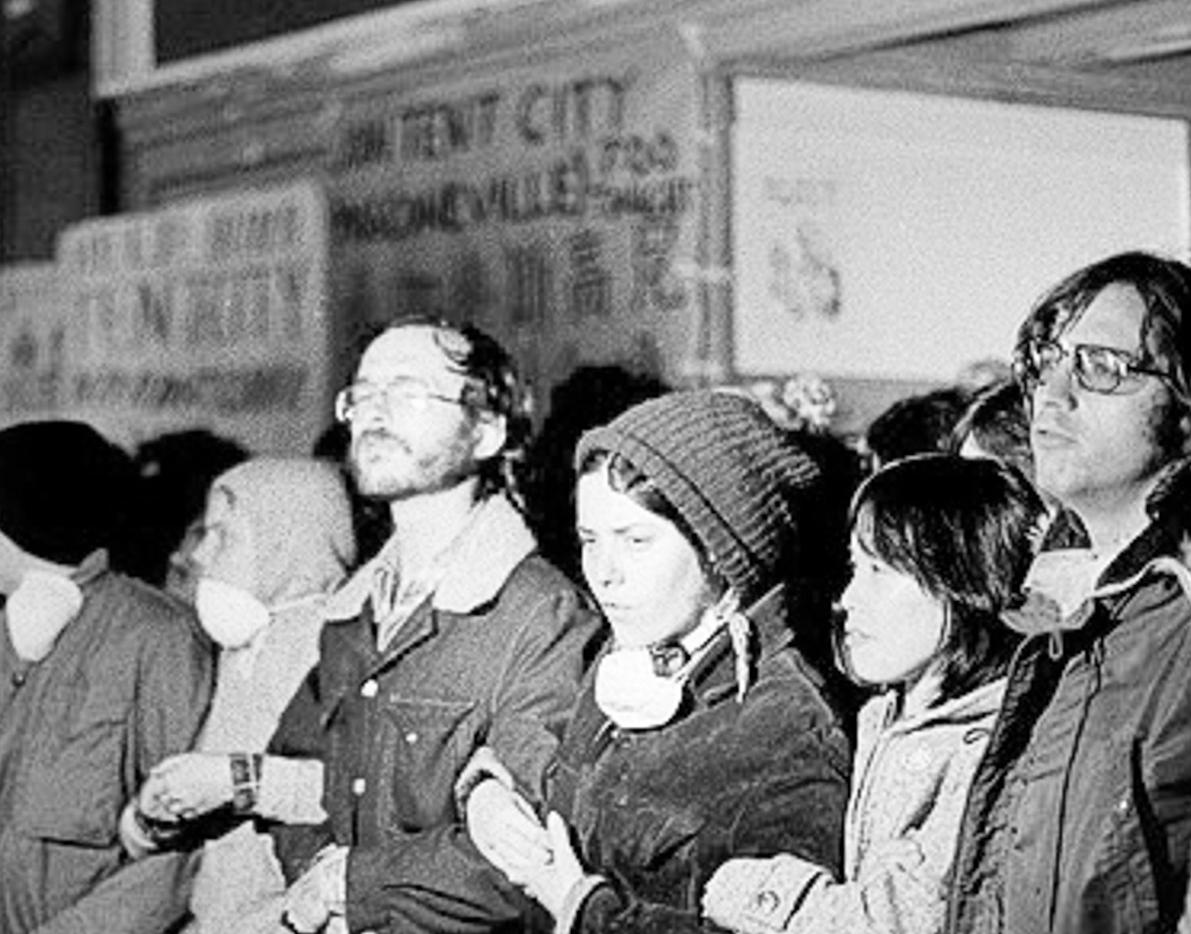

During the 1900s, most Bay Area OFWs lived in or around the International Hotel, a residential hotel on San Francisco’s Kearny St. The 10-block area around the I-Hotel was dubbed “Manilatown” for its large population of Filipino immigrants, who took advantage of its relatively low rent prices.
Milton Meyer & Co. ordered the evictions of Filipino and Chinese I-Hotel residents in October of 1968 to make way for a parking lot.
Tenants, represented by the United Filipino Association, pressured Milton Meyer & Co. to sign a lease scheduled for March 16, 1969. However, on the morning the lease was set to be signed, a mysterious fire broke out at the I-Hotel, killing three residents.
Milton Meyer & Co. withdrew from the agreement, claiming the building was “unsafe” and needed to be demolished. However, after more protests by community members, they signed a lease extending to June 30, 1972.
During this period, Manilatown community members extensively renovated the building, rebuilding and redesigning rooms destroyed by the fire.
Eventually, the battle for the I-Hotel took a dark turn when ownership was transferred to the Four Seas Investment Corporation. Negotiations with the new company to extend the
lease proved no use, and the California Supreme Court ordered residents to vacate the building in 1977.
The final fight against the eviction took place outside the hotel on Aug. 4, 1977 with help from the recently formed International Hotel Tenants Association. Thousands of protesters formed a wall blocking the entrance to the hotel, while 400 riot police officers attempted to make their way through to the hotel to evict the last remaining residents.
The city established the International Hotel Block Development Citizens Advisory Committee to determine the fate of the hotel.
In 1982, the San Francisco Board of Supervisors passed a zoning ordinance that required housing in the I-Hotel.
Ownership of the hotel was then sold to the Archdiocese of San Francisco and the Catholic Church. The hotel was to be rebuilt as a joint effort by St. Mary’s Chinese Schools and the Chinatown Community Development Center.
The hotel reopened its doors in 2005, once again providing low-income housing to the residents of San Francisco.
by D’Anjou Libunao designed by D’Anjou Libunao photos courtesy of Nancy Wong and Tim Adams
4.
5.
6.
Despite an up-and-down season, the Bears rode through with a powerful offensive line. Junior running back Eva Ama played a key role in run and pass plays and had the most yards per game as a non-quarterback. Senior wide receiver Angelo Marin led the team in receiving yards and touchdowns. The Bears were seeded fourth in Division II of CCS. After beating Monterey 35-7 in the first game, they fell to Wilcox 10-7 in the semifinals.
M-A had its first flag football season under Coach Jason Knowles. Despite a rough start, the Bears stepped up from averaging 8.8 points in the first few games to 15.4 points in the last 10 games. The team won six of their last 10 games, ending their season with a 6-10 record and a bright future.

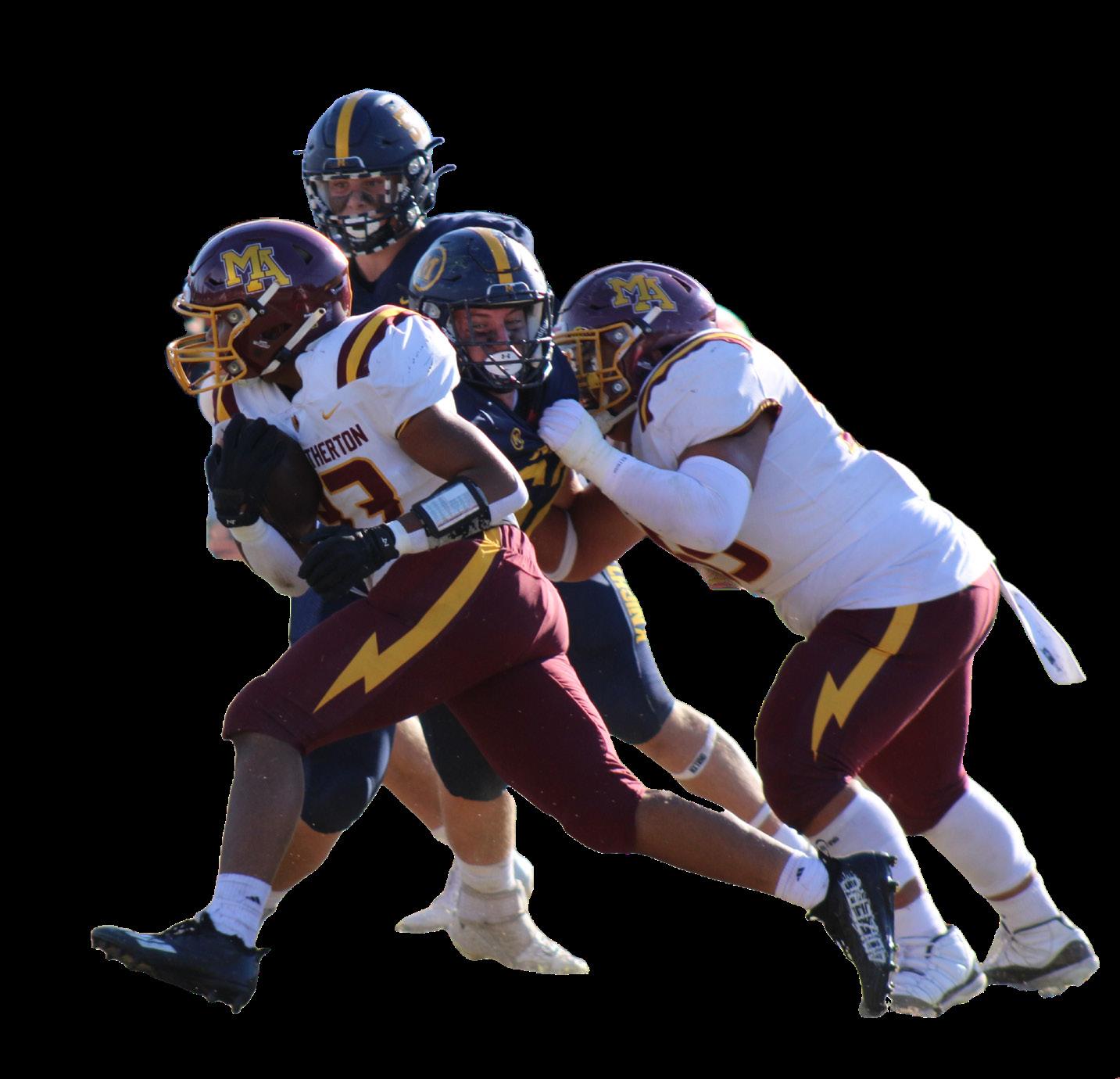
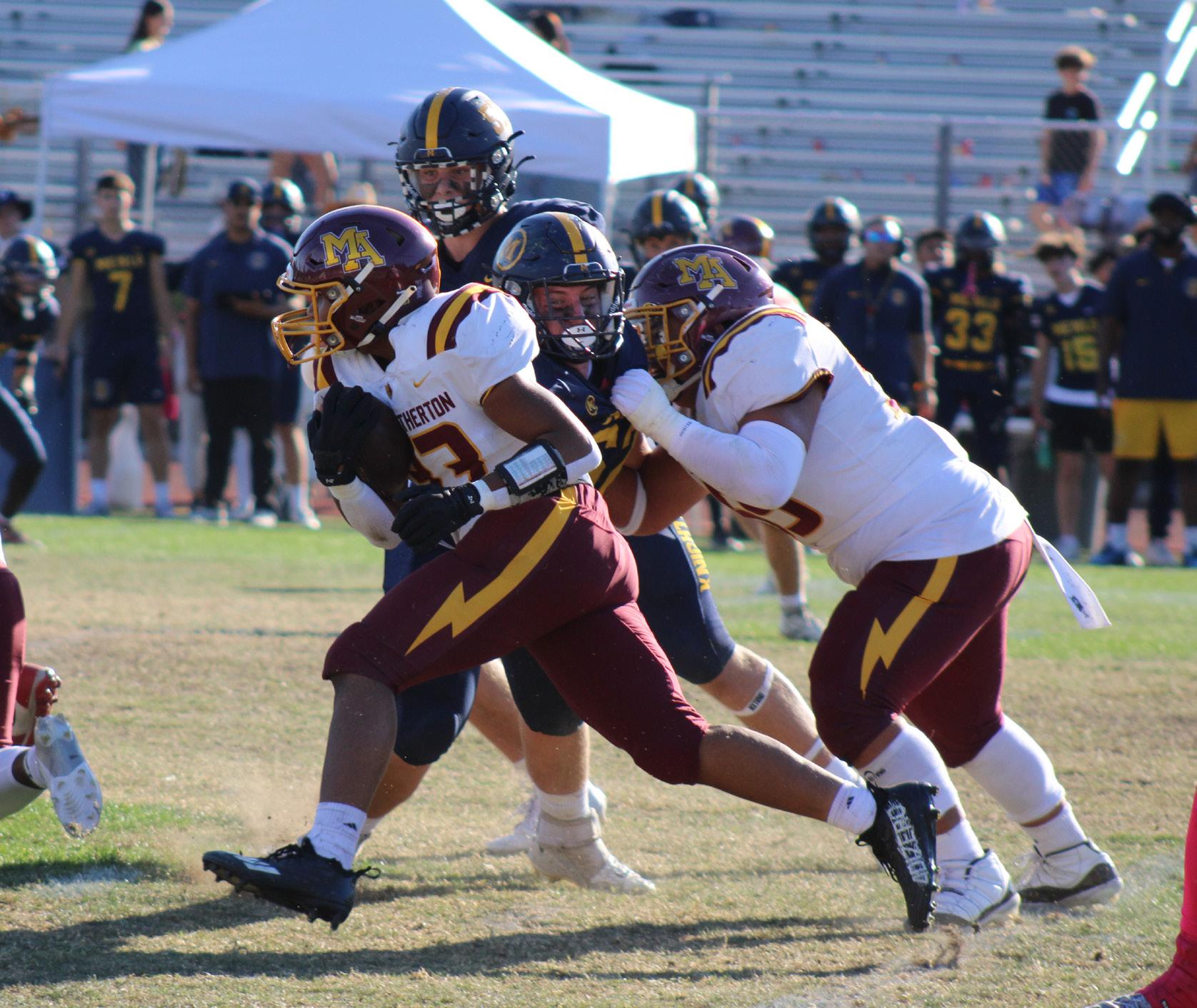
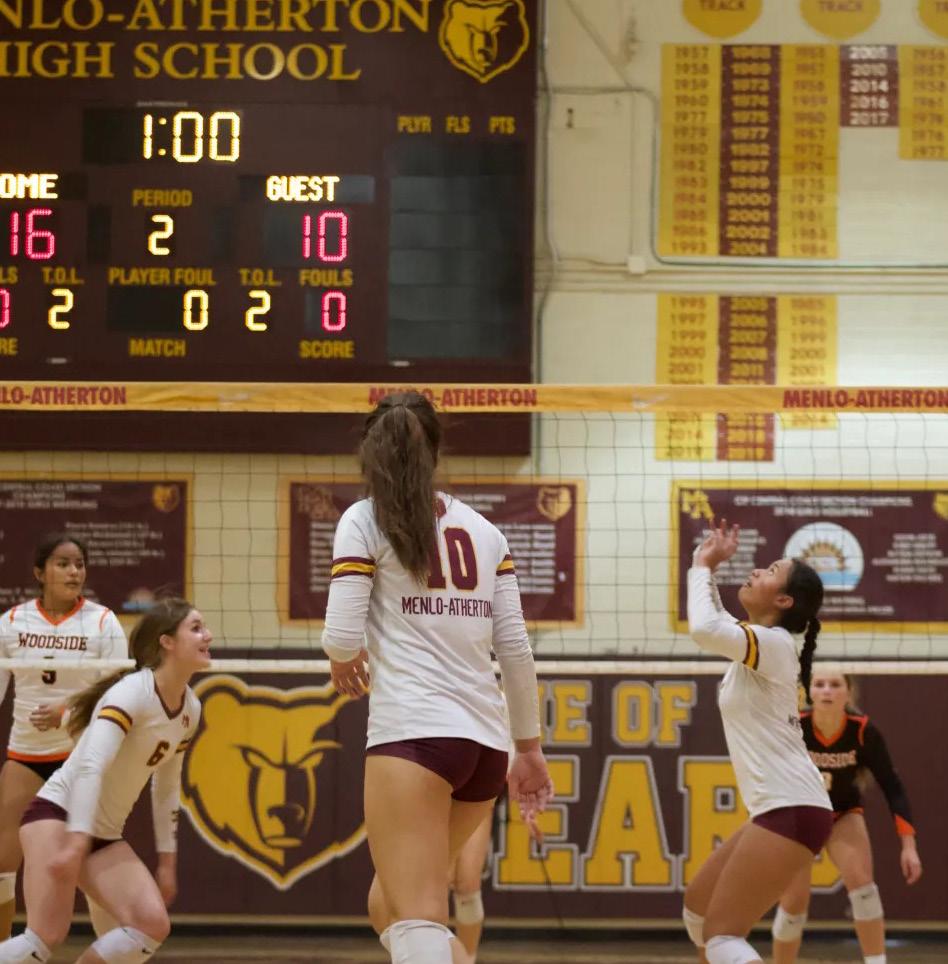



The girls volleyball team had quite an impressive season. The team consisted of nine seniors, including two college commits, and finished with a record of 23-8, putting them first in PAL. Although their playoff run was cut short with a heartbreaking first-round loss to Paly, the Bears still ended eighth in CCS.
The girls golf team struggled to find their footing throughout the season with a final record of 1-9. They finished off on a high note, winning their last match against Hillsdale with the help of senior Morgan Baudler’s excellent shots.
The girls tennis team came in fourth in PAL with a record of 8-6. In the individual singles PAL championship, senior Tessa Ellingson came in first place, and sophomore Marissa Hou came in fourth. In CCS individuals, Ellingson played in singles and lost in a tough matchup to conclude the season.
The Bears had a superior season: junior Evan ten Vaanholt led the team on offense with 67 goals and 32 steals, while senior Kieran Narayan contributed with 36 assists. The Bears ended third in the league with a 10-2 record. The team was seeded fifth in Division I of CCS, but lost to Sequoia in the first round.

Averaging almost 13 goals and only allowing four goals per game in league play, M-A maintained a perfect 10-0 record, dominating the league. After a hard-fought regular season, they were seeded first in CCS Division I. Following a commanding 8-0 win against Wilcox in the quarterfinals, the team faced Leigh and lost 9-7.
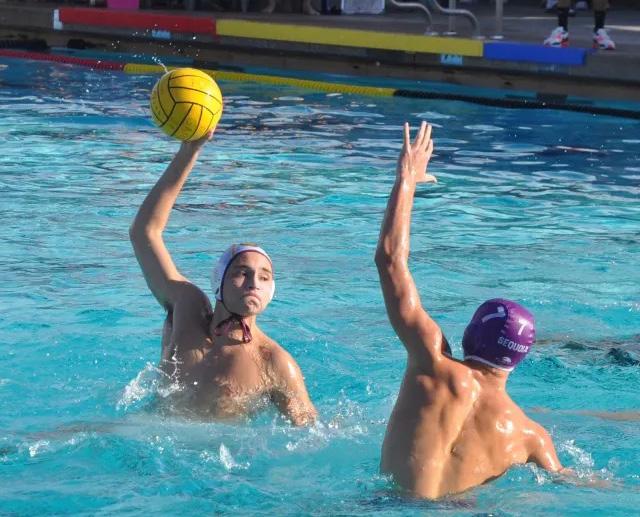
Led by star runners junior Cason Mitchell and senior Thomas Bernadicou, the boys cross country team had a very strong season. M-A dominated PAL, winning three of four meets, including the PAL championship. In the CCS playoffs, Mitchell and Bernadicou placed seventh and ninth respectively, earning them spots at the CIF state championship.

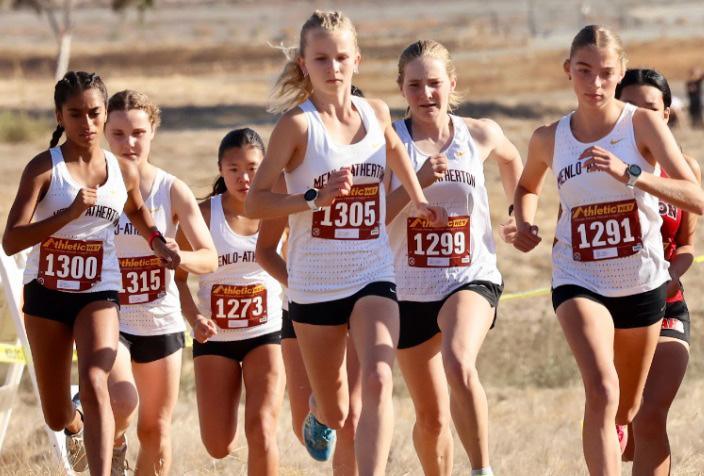
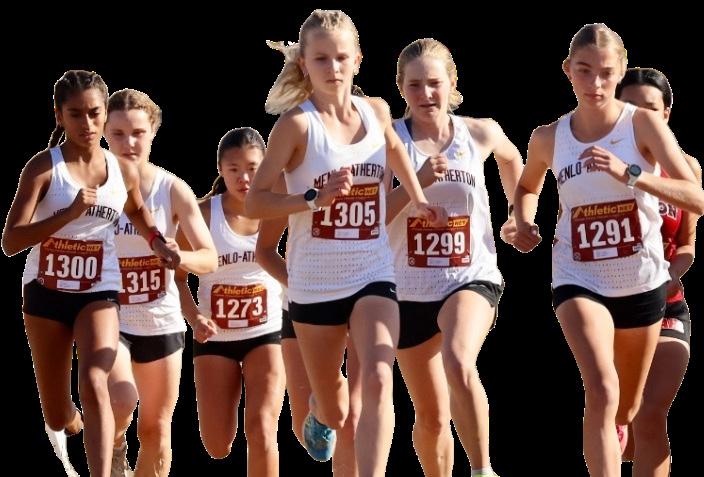
The girls cross country team had a great season. The team placed third in PAL and finished fourth at the Crystal Springs CCS championship. Freshman Caroline Pflaum went on to compete in the CIF state championship, placing 12th.

“Ithink my restaurant is capable of beating other restaurants,” Cafe Del Sol owner Leonel Diaz said. “I’m not talking about the looks and how big it is outside—I’m talking about the food.”
Cafe Del Sol’s innovative takes on classic dishes distinguish the restaurant from nearby Mexican spots. The menu takes inspiration from family traditions and input from the three owners.
Diaz’s mother, Emilia Gonzalez, and her
friend, Uriel Gonzalez, ran the restaurant in its early stages. In 2014, Emilia asked Diaz to help guide staff and work fulltime. He eventually took full control of the restaurant.

Though Cafe Del Sol puts great emphasis on its delicious meals, it also offers a lively ambiance. The restaurant’s vibrant, festive atmosphere and creative Mexican dishes stand out on a quiet Menlo Park side street.
The restaurant’s most popular dishes include the camarones a la plancha, a kind of grilled shrimp, and the seafood enchiladas. “There are people who come from Carmel, San Jose, and San Francisco just to eat our enchiladas,” Diaz said.
The chefs often experiment with unique seasonings and unconventional flavors, such as pumpkin seeds in salads, mango sauce in savory plates,
and a mix of Spanish and cilantro rice.
Following the pandemic’s instability, finding a steady flow of customers has been difficult. “We are losing the eating out culture, and it’s getting hard right now, but we’ll keep trying,” Diaz said.
Despite these challenges, The Almanac has named Cafe Del Sol Menlo Park’s Best Mexican Restaurant for eight consecutive years.
“Seeing my customers happy here makes me enthusiastic. It’s like the energy Superman gets when he’s flying or a musician singing for the crowd,” Diaz said.
Cafe Del Sol is located at 1010 Doyle St. in Menlo Park and is open every day from 10:30 a.m. to 9 p.m.
by Lilia
Wilkiewicz designed by Amari Witt and Emily Pecore photos courtesy of Lilia Wilkiewicz
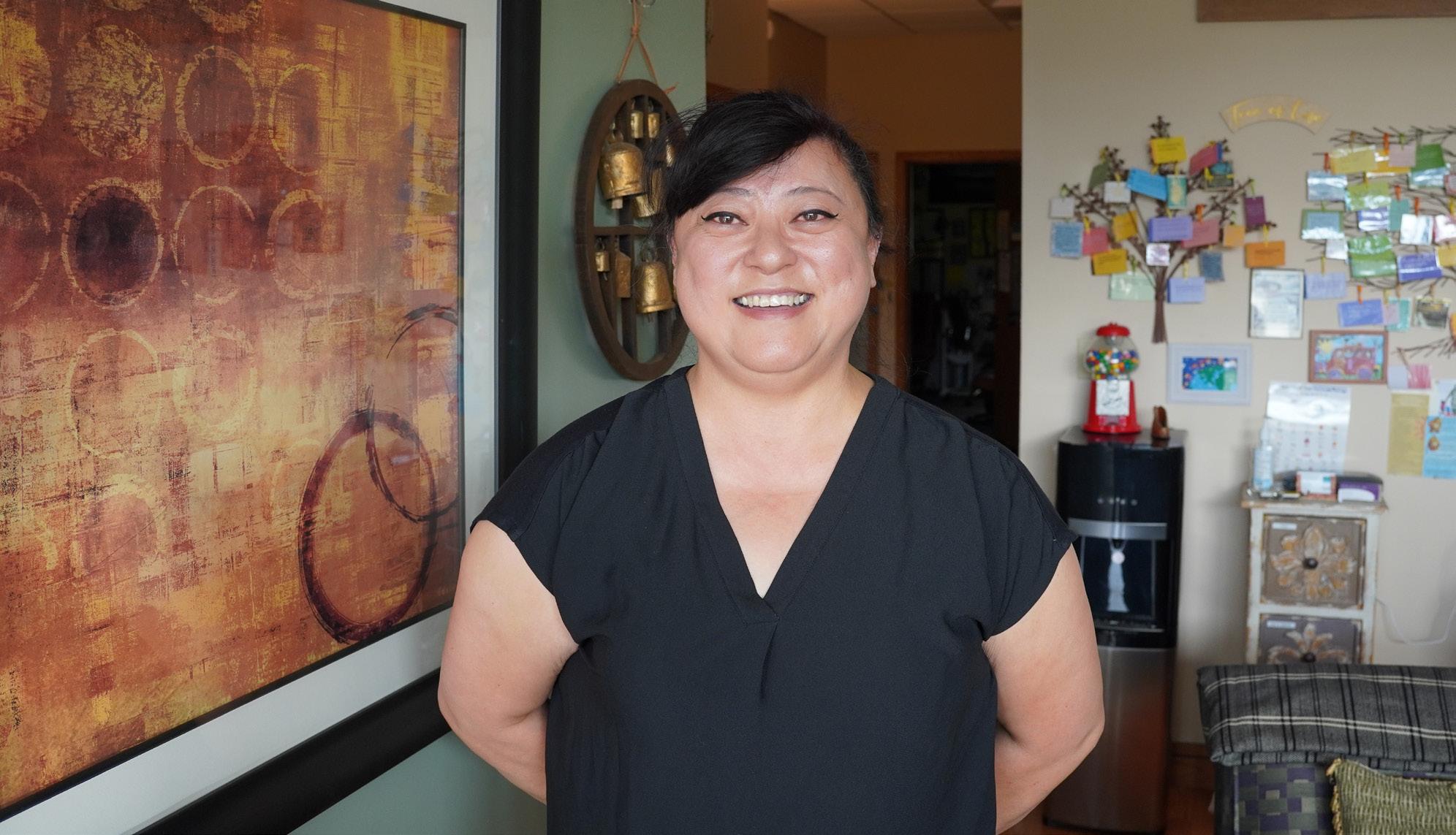
Lotus Healing Acupuncture has provided traditional Chinese medicine, or TCM, services to Bay Area residents since 2004.
TCM dates back over 2,200 years to ancient China. It aims to restore a person’s qi, a vital energy that makes up the physical body and feelings, and yin-yang, opposing forces that form a whole.
In TCM, if a person’s qi is blocked, it can affect their mental and physical health. One form of TCM is acupuncture, which involves placing thin sterilized needles into meridian points of the body to improve the flow of qi.
Lotus Healing Acupuncture’s owner, Vivian Chou, grew up in Taiwan with a family of TCM practitioners.
“In the Asian community, parents often tell kids to go on certain career journeys. I hated that. My father wanted me to pursue TCM, but it was later that I decided for myself that this is something I wanted to do,” she said.
In 1992, Chou immigrated to America to pursue her education in TCM. She
received a Master of Science in the field and her acupuncturist’s license in 1999. She then earned her PhD in TCM in 2003.
After graduating, Chou worked as an interpreter for an acupuncture school in Oakland, Calif. “Eventually I felt like I was ready to have my own practice where I could decide what I want to do instead of being told what can be done,” she said.

In 2004, she opened Lotus Healing Acupuncture. “I wanted to call in and invite a higher power, which is the lotus, a symbol in Buddhism, which represents purity and compassion,” she said.
When she opened her business, many were skeptical about trying acupuncture. “When people first hear about acupuncture and learn that it involves needles, they become a bit skittish,” Chou said.
New patients are given a 90-minute consultation where Chou creates an individualized plan. “By observing a person, I can translate it into valuable information because that’s the beauty of Chinese medicine. Through all of this I can decipher the information and explain to the
that we are any less than someone who was born here. Through our dual language skills, we can reach more people and be able to offer more,” Chou said.
The clinic is located at 226 De Anza Blvd. in San Mateo.
by Eileen Liu designed by Leah Collins photos courtesy of Eileen Liu
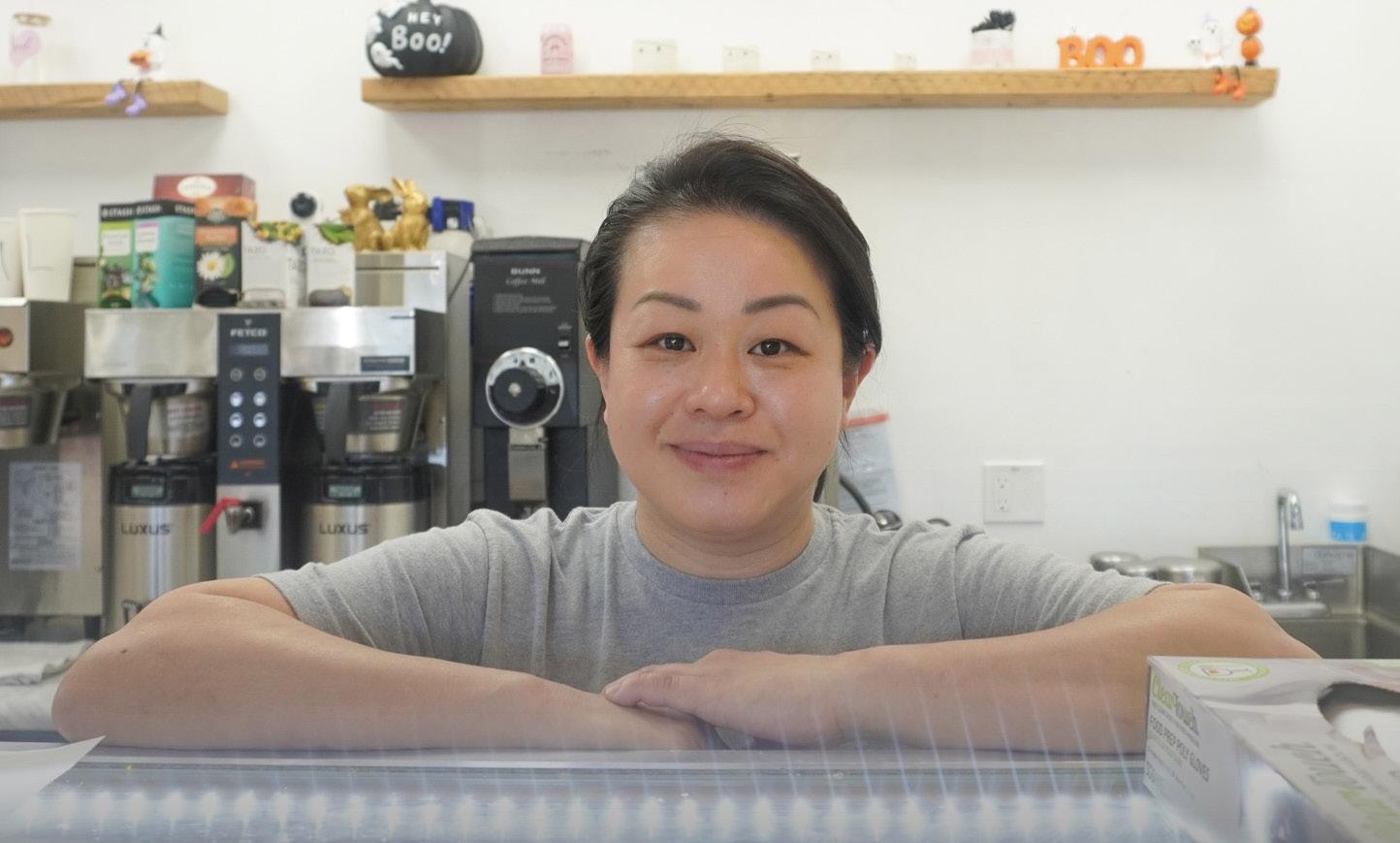
Nestled between savory restaurants on Laurie Meadows Dr. in San Mateo is a bright blue sign that glows: “Cruel Donuts: Always Fresh. Come on in.” Upon entry, the scent of fresh donuts fills the air. Light pink donut boxes designed by owner Lean Ma are scattered throughout the store.
Ma’s family fled Cambodia in the late ’70s to escape the Khmer Rouge’s genocide, one of the largest genocides in history. From 1976 to 1980, they stayed in ref-
ugee camps throughout Southeast Asia, including in Thailand, where Ma was born.
When Ma was just a year old, her family immigrated to America. “When they first came here, they had nothing,” she said. “My older brother died on the way here because they had no food for him. He was two years old. Some of my cousins passed away too. My family was very relieved because they were finally at a safe place.”

Ma’s family first settled in Washington but soon relocated to Yucca Valley, Calif. after a family friend helped them buy and start a nearby donut business. “It was a challenge for my parents in the ’80s when they first opened the business. The town was near Palm Springs and all Caucasian people. My parents faced racism but just ignored it,” she said.
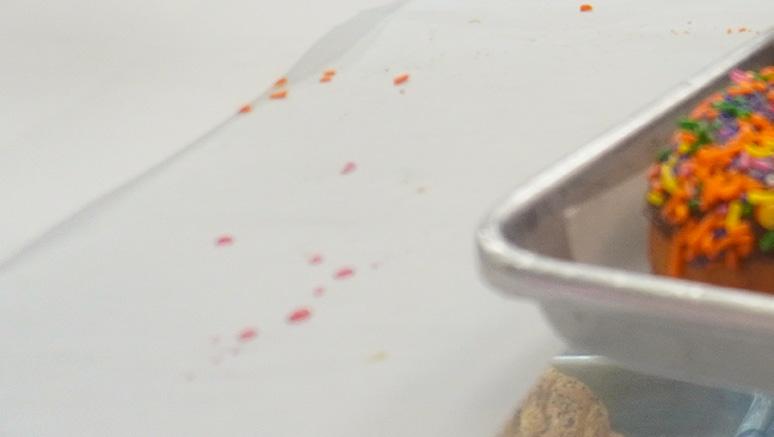

As Ma’s family moved around California and their business grew more successful, they opened more donut shops. Today, their donut shop is known as “Happy Donuts” and has
several locations around California, with the closest in Palo Alto.
Throughout her childhood, Ma helped out at her parents’ donut shop. She finally opened her own San Mateo location in 2022. Inspired by one of her favorite childhood donuts, the French cruller, and her favorite ’80s song, Bananarama’s “Cruel Summer,” Ma decided to name her store Cruel Donuts. “It is a cruel world out there, but you can sprinkle a little bit of happiness in people’s lives by giving them donuts,” Ma said.
Today, Cruel Donuts offers a variety of unique flavors like crème brûlée, passion fruit, and ube cake.
“There’s a lot of opportunity out here. Whatever you dream of you can make it happen. It just takes a little hard work and perseverance,” Ma said.
Cruel Donuts is located at 35 Laurie Meadows Dr. in San Mateo and is open every day from 6 a.m. to early afternoon.
by Eileen Liu
Siegel
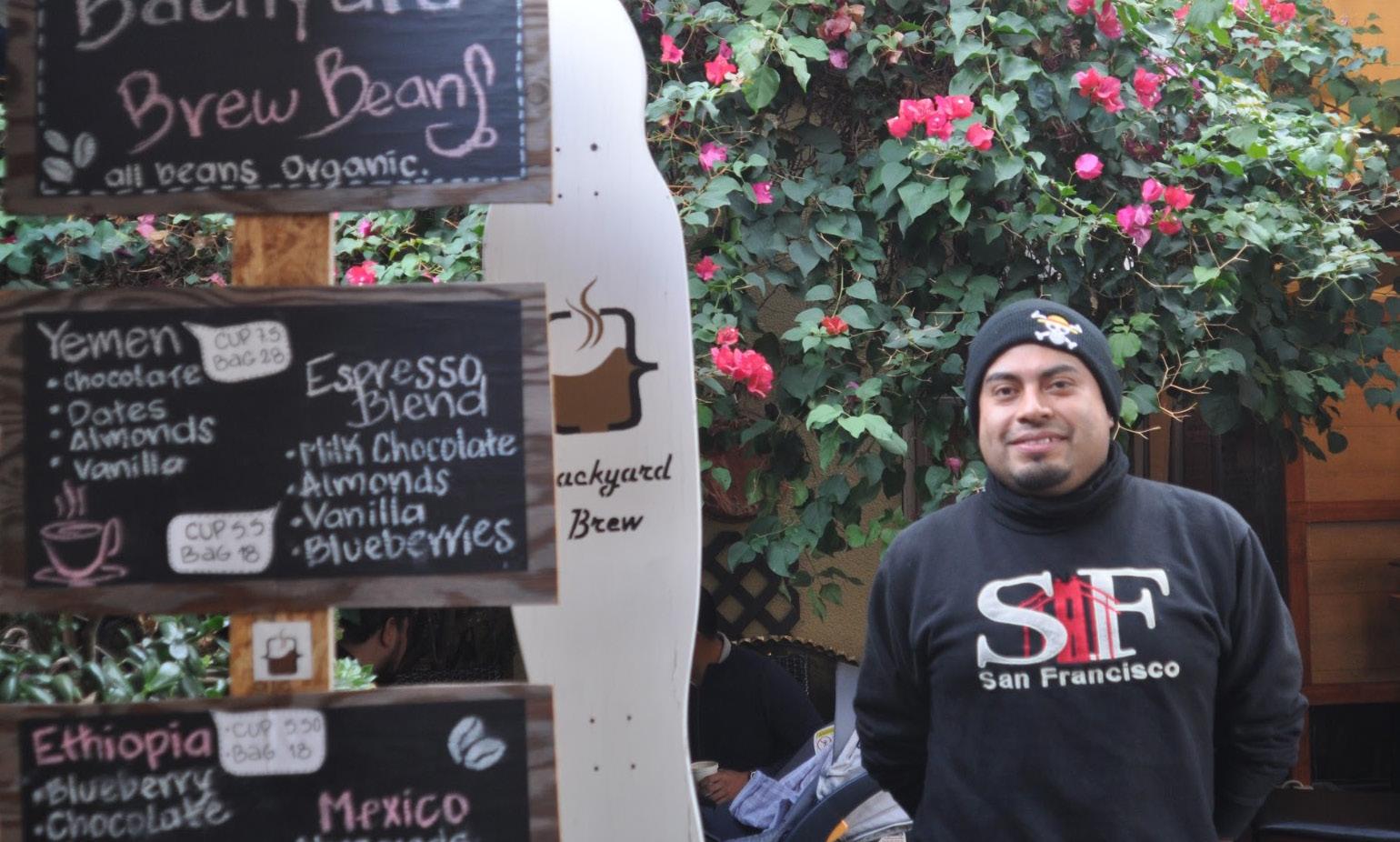
Hidden behind the facade of fancy restaurants on Palo Alto’s California Ave. lies Backyard Brew, an intimate, charming cafe. After walking through a narrow alleyway of intricate murals, customers will stumble into a cozy backyard featuring an old Volkswagen bus and a coffee bar.
Owner Ryan Khalil founded Backyard Brew in 2016 when he discovered a vacant space across from his parents’ restaurant, Mediterranean Wraps. The patio had nothing but junk and leftover restaurant equipment, but Khalil promised the landlord that he could “turn it into a viable space.”
Before Backyard Brew, Khalil had several unsuccessful business ventures, and those around him were doubtful that his new cafe would be any different. “Everyone thinks you’re crazy and nobody believes in you,” Khalil said.
Today, however, the cafe is booming with business.
The cafe’s interior is filled with vintage furniture and artistic touches. A blue vintage car serves as the main attraction, and other retro figurines and pieces decorate the counter. Customers have also doodled and written on the walls. “I encourage
people to make their mark and add value to the space,” Khalil said.
“It has character, and it’s not just plain Jane. Everything about this cafe is unconventional,” customer Tanvi Bhardwa said.
Backyard Brew differs from other coffee shops with its innovative menu. Some fan favorites include the Banana Bread Latte, Nutella Mocha, and Desert Rose Latte. The Banana Bread Latte, in particular, stands out with its subtle banana flavor mixed with cinnamon.
Khalil’s coffee blends are inspired by various countries like Turkey, Ethiopia, India, and Brazil. Backyard Brew also offers a selection of pastries and comfort food, like potstickers, teriyaki mixes, and a variety of tacos.
Khalil refers to himself as the “Tailor of Flavor” because he is constantly finding new ways to innovate his menu. He focuses on using natural ingredients, unlike other companies in the industry that “use pumps and synthetic flavors.”
“My favorite thing is just making people happy and helping them discover new things. If I can affect one person in a positive way, it’s amazing. I want to add value into this world in the best way possible,” Khalil said.

Backyard Brew is located at 444 California Ave. in Palo Alto and is open every day from 8 a.m. to 5 p.m.
by Jovi Wong designed by Taylor Bentley photos courtesy of Jovi Wong and Celine Chien


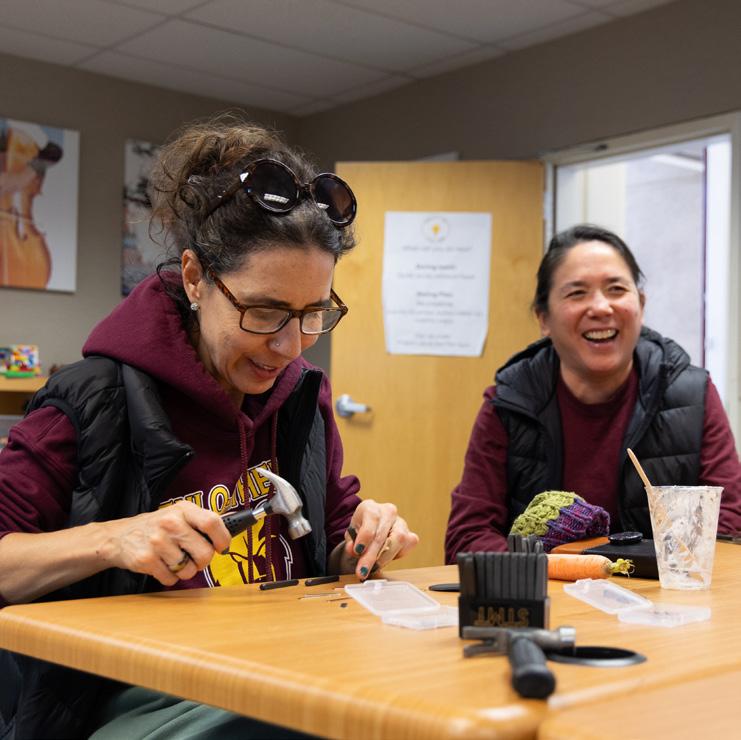
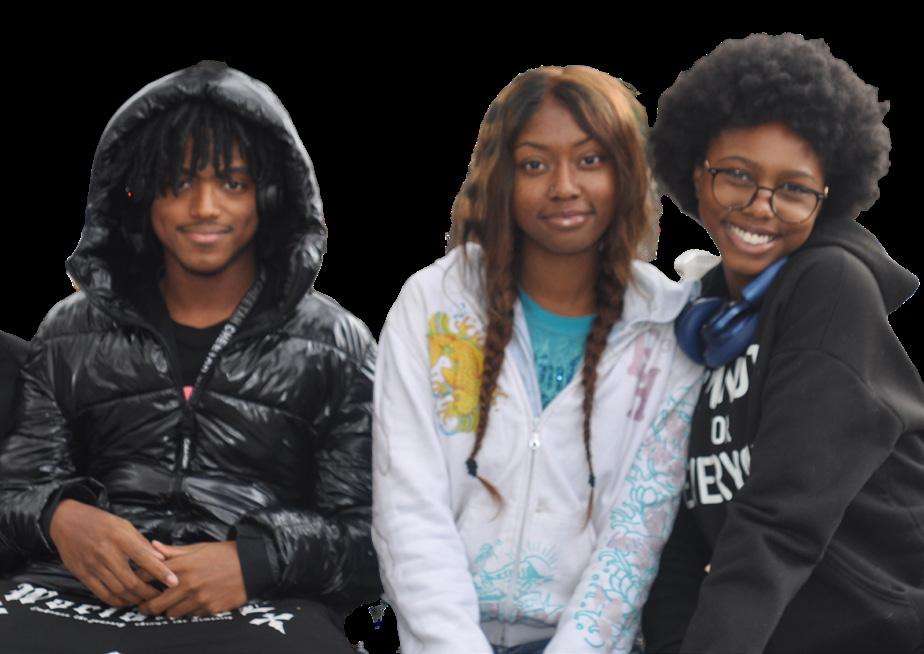
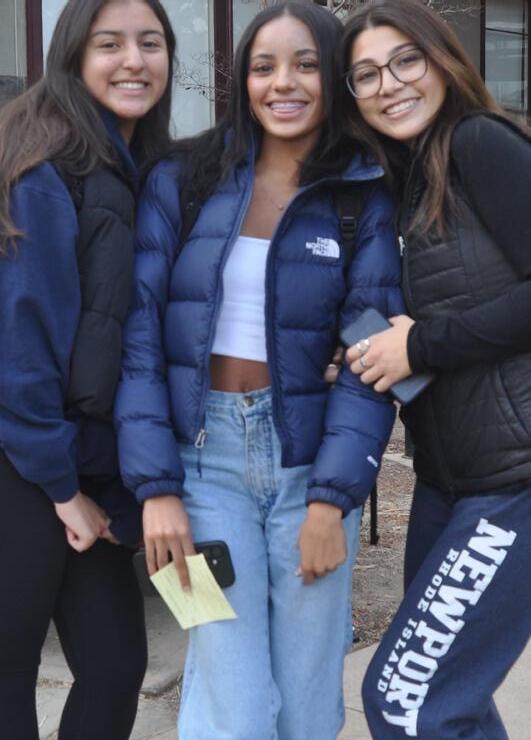

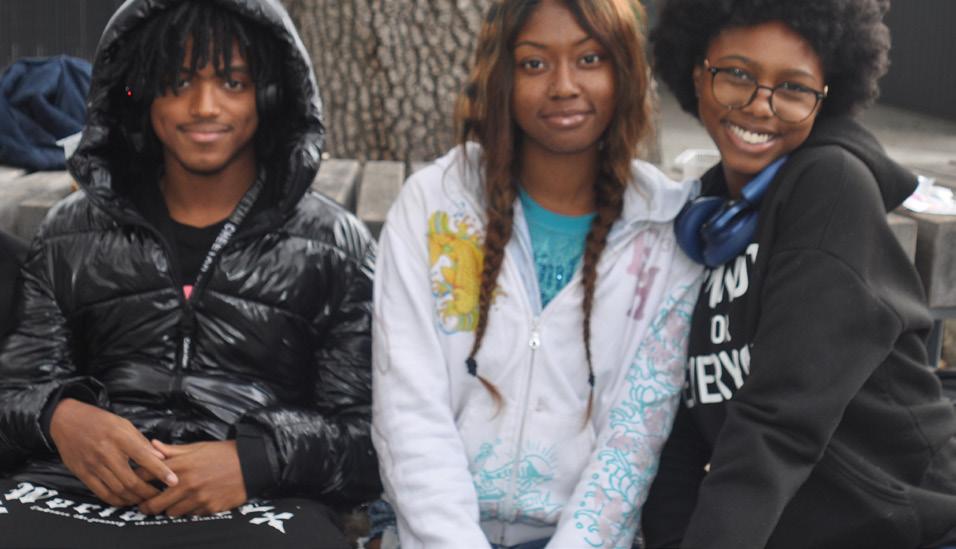

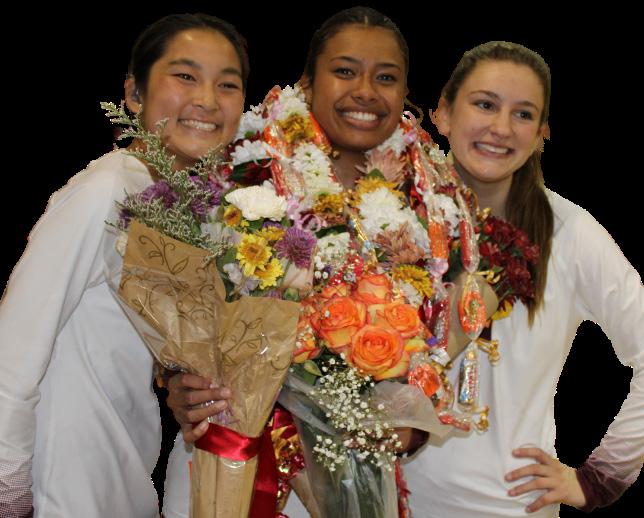
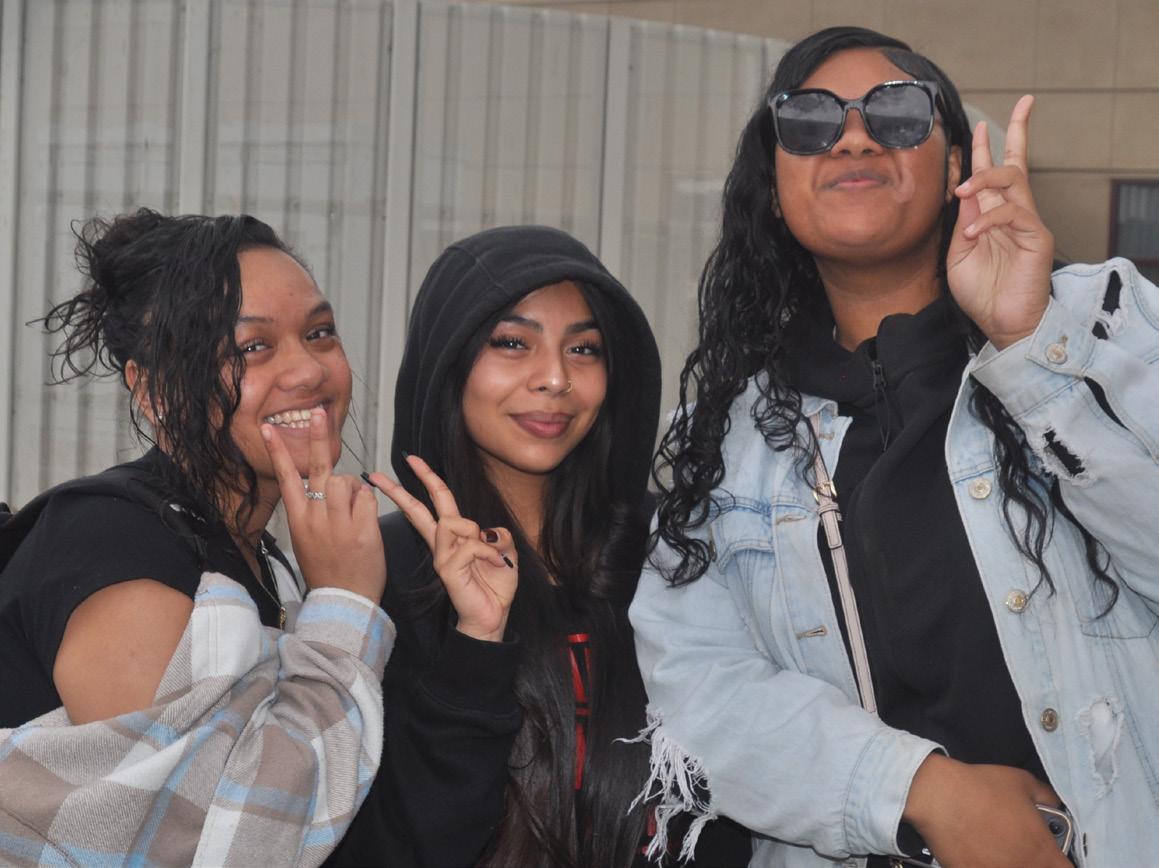
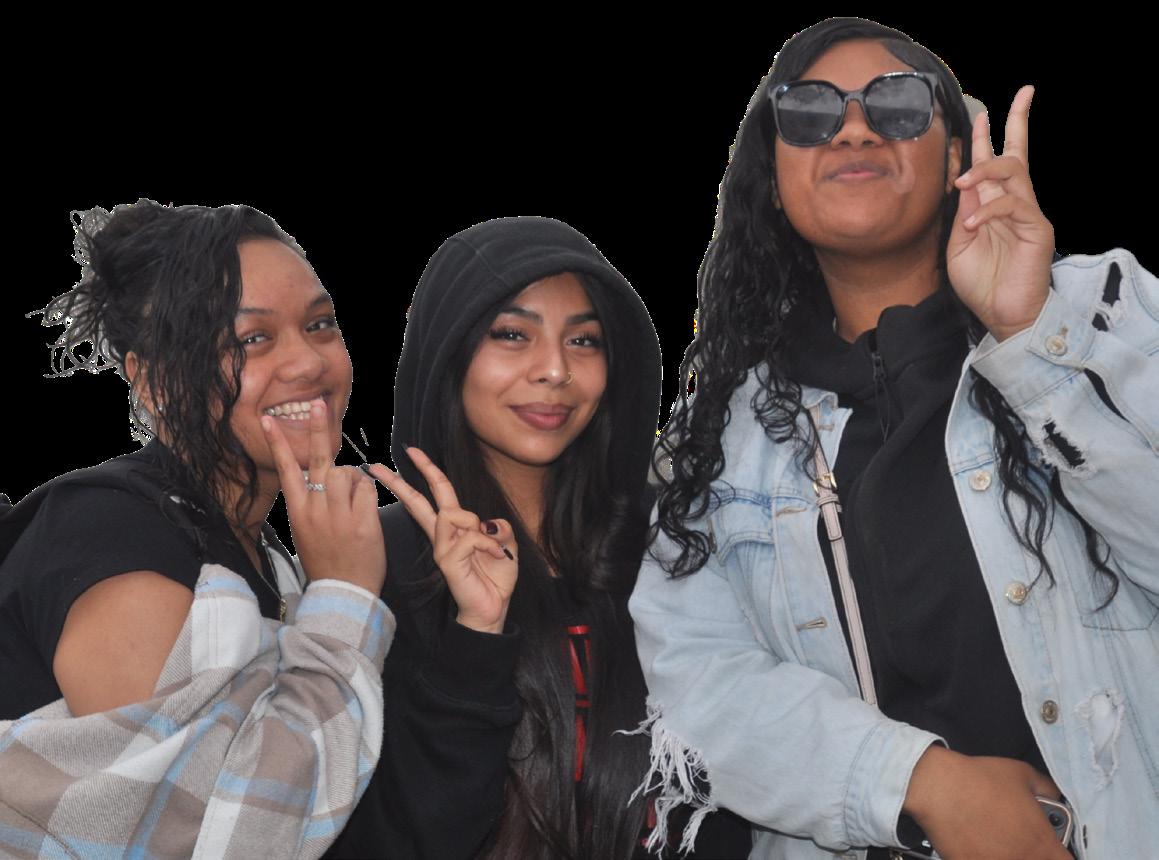

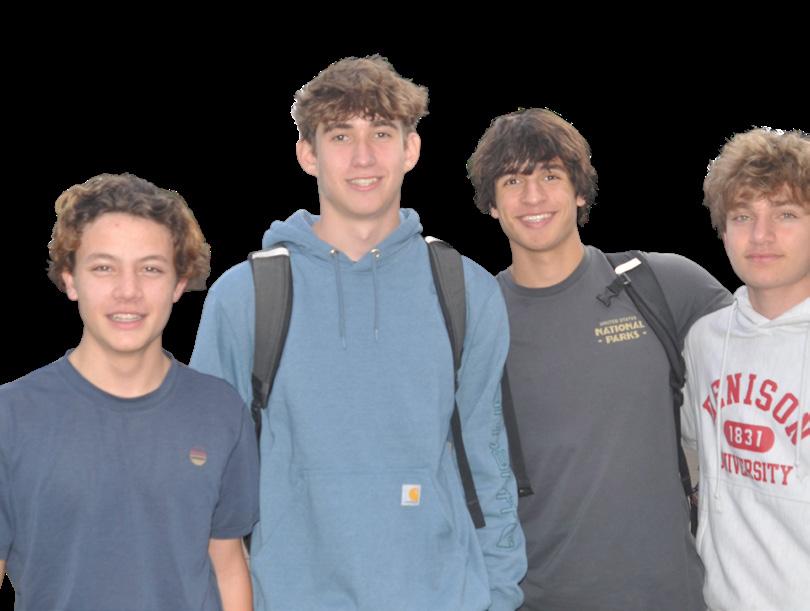
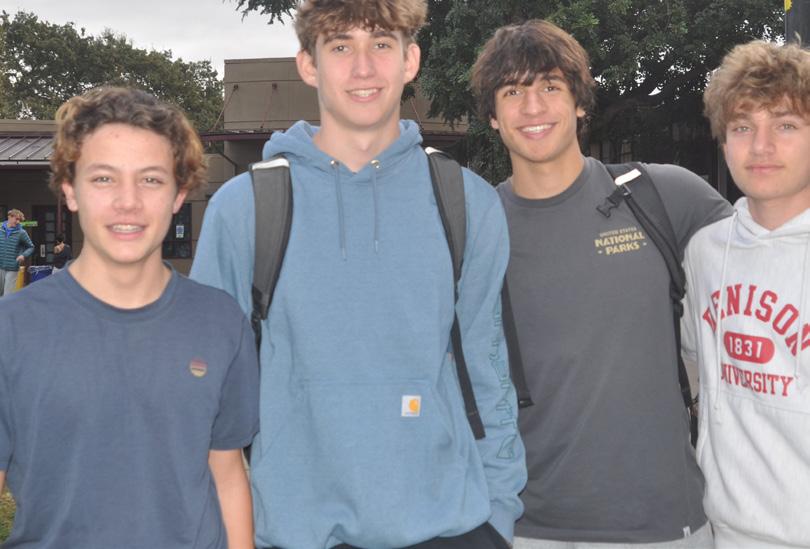




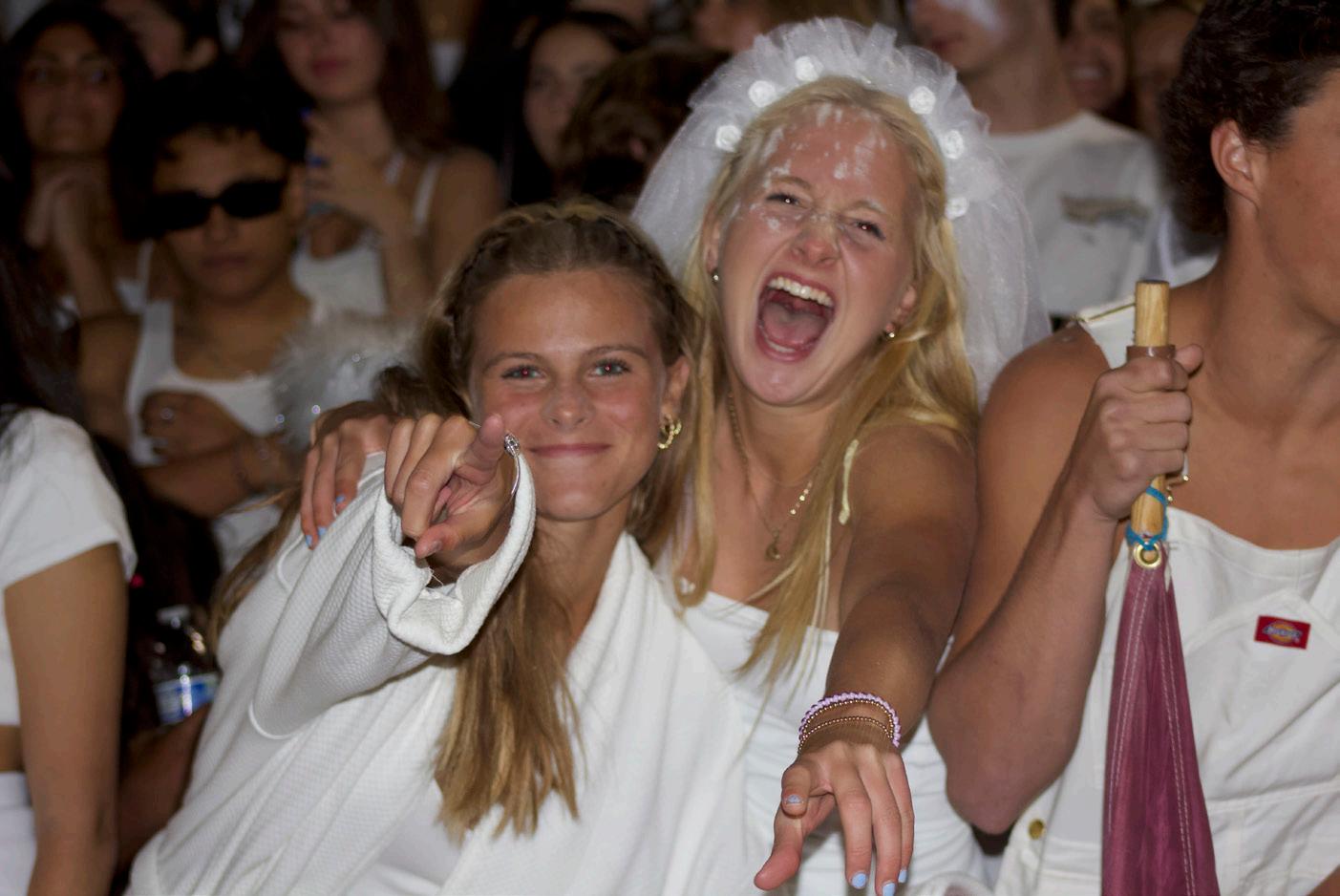




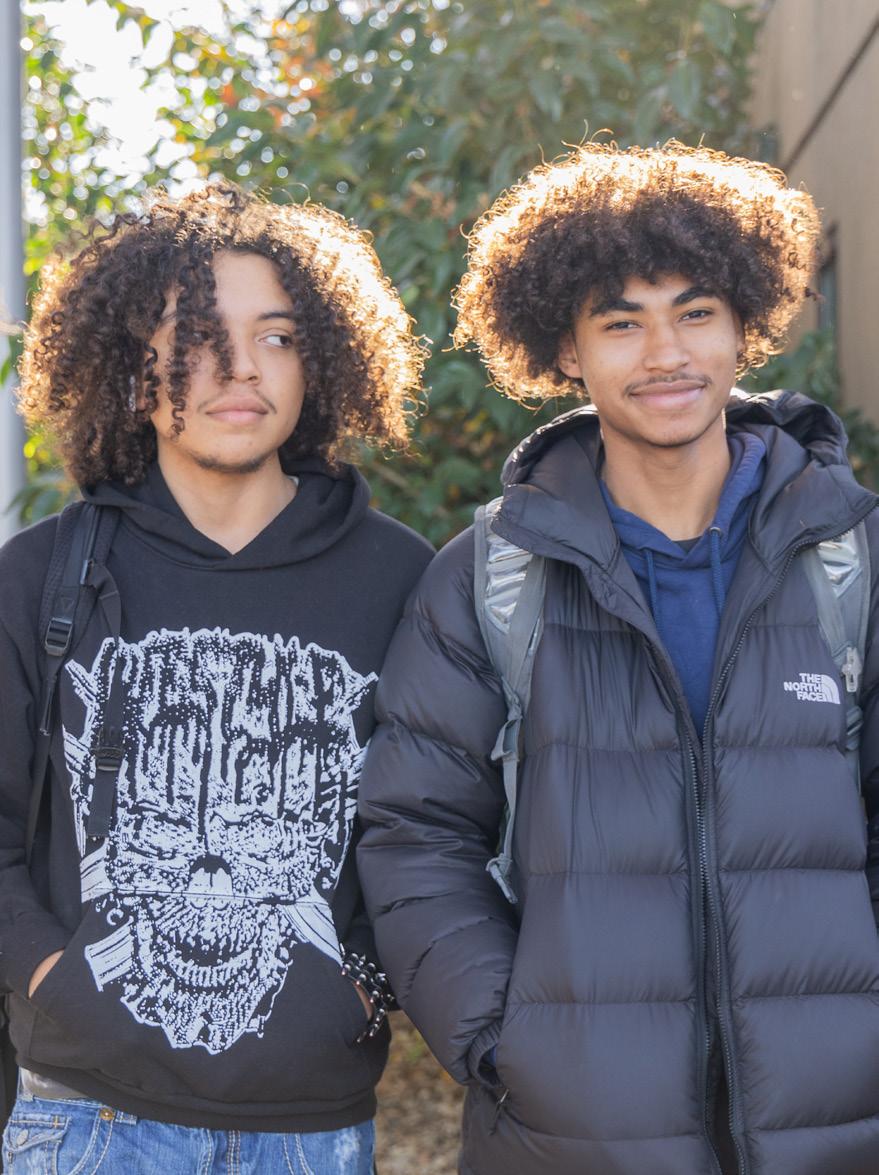
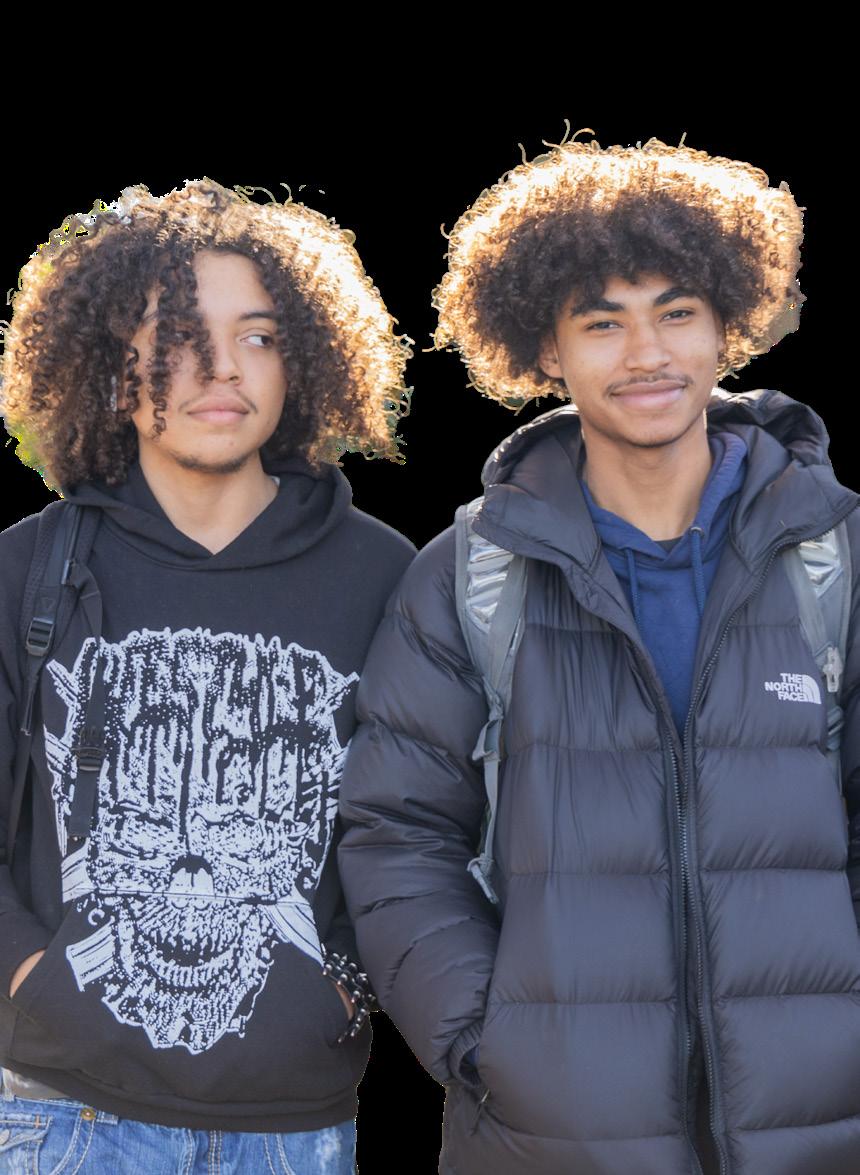

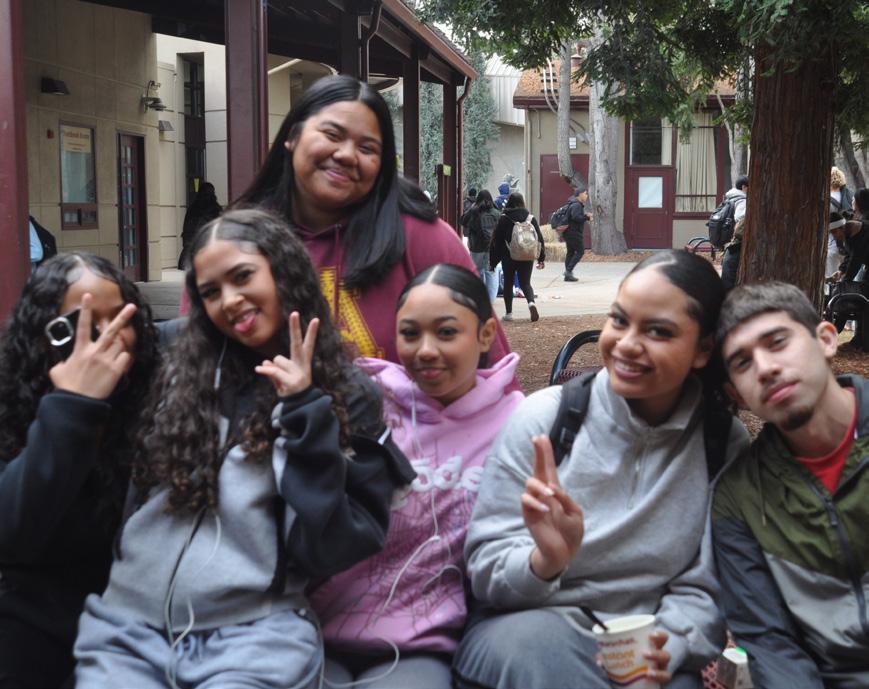

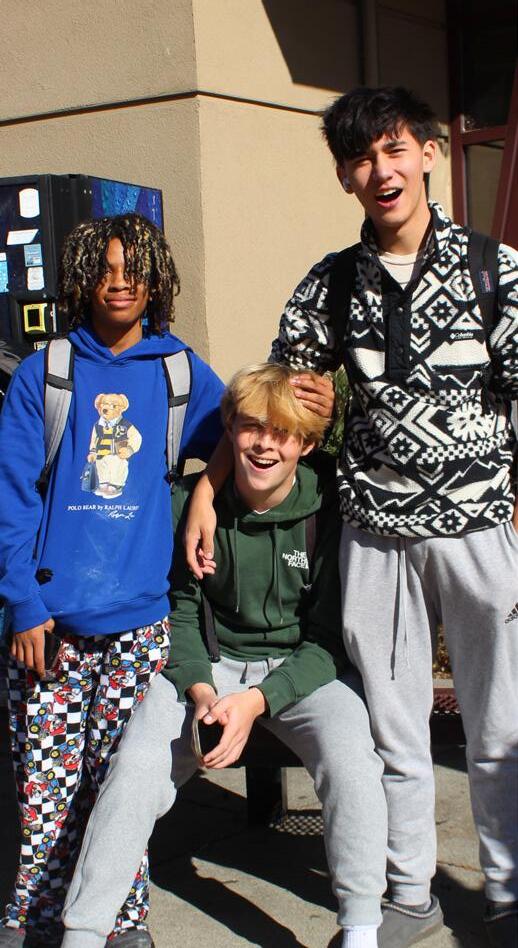
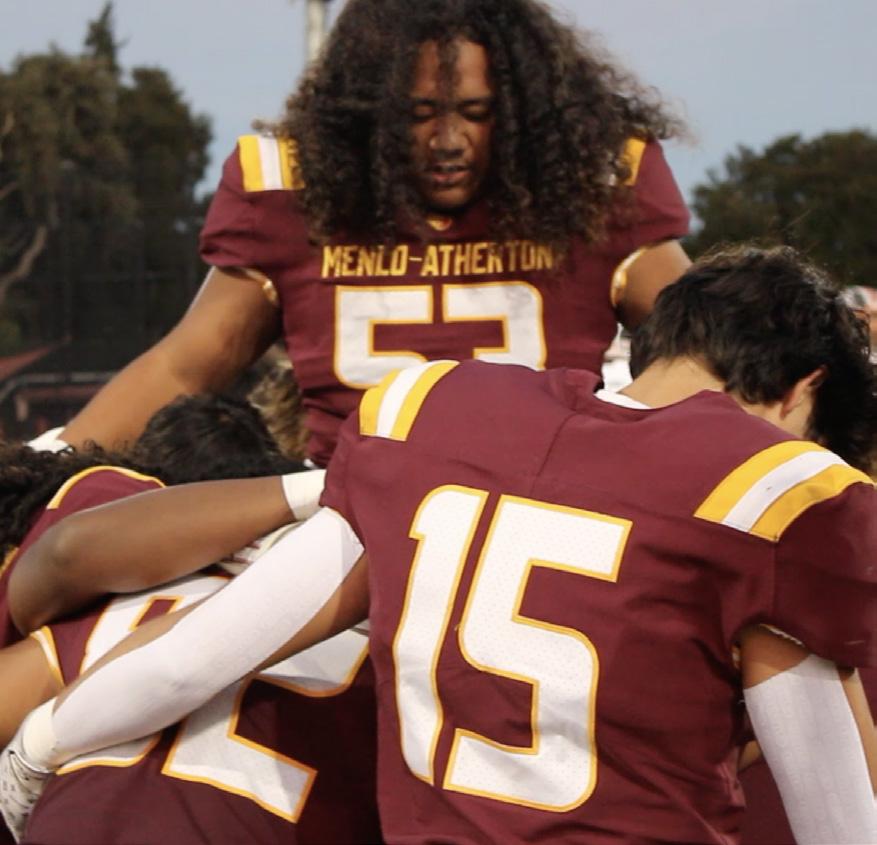
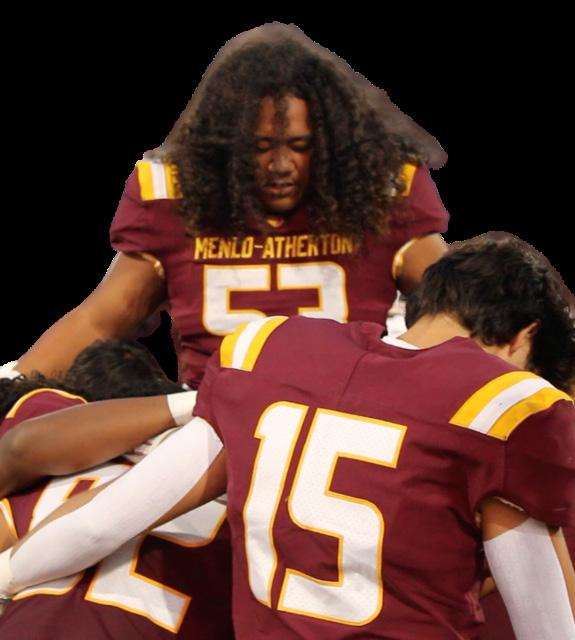
The Sequoia Union High School District Board of Trustees met six times this semester and recently swore in new trustees Mary Beth Thompson and Maria Cruz.
After a brief performance, members of M-A’s cheer team received certificates of recognition for their “unwavering spirit” and “dedication and integrity.”
“They are a diverse, unified, powerful, and, perhaps most importantly, fun group at M-A,” Principal Karl Losekoot said.
The Board also commemorated M-A’s AVID program for increasing student graduation rates and meeting A-G requirements. The lowest graduation rate for AVID students since 2016 has been 96%—around 6% higher than M-A’s overall graduation rate in the 2023-24 school year. The percentage of students in AVID who met A-G requirements increased from 79% in 2016 to 87% in 2024.
“It helped me become an A and B student instead of a B and C student. AVID is such a good program,” sophomore Camila Aguilar said.

Sequoia District Teachers Association President Edith Salvatore announced the SDTA and the District reached a tentative agreement to raise salaries by 5.5% in the 2024-25 school year. The contract was ratified almost unanimously by the teacher’s union a week earlier.
The District presented findings from a study conducted by Hanover Research on the impacts of detracking. The independent analysis, which cost around $54,000, was commissioned by the District after their own 2023 report was met with criticism from the community about bias.
The results confirmed earlier reports that detracking does not appear to have negative effects on AP enrollment and exam scores later in high school and showed that detracking likely improved science and English performance.
“Over the years, my colleagues have worked tirelessly to design and refine this curriculum, and the results speak for themselves,” M-A science teacher Rachel Richards said during public comment. “Our SBAC scores have improved, and our students are scoring higher on AP exams.”

The Board addressed Title IX changes at multiple meetings. In compliance with state law, the District has increased flexibility around who can conduct Title IX investigations.
Todd Beal, Assistant Superintendent of Human Resources, reviewed changes to the existing Title IX guidelines that made genderspecific pronouns gender-neutral.
Additionally, the District clarified steps of the disciplinary process, determined guidelines for makeup work after student absences, and more.
During public comment at all four sessions, members of M-A’s basketball team, staff members, and community members protested basketball coach Mike Molieri’s unexplained suspension.
“I miss Coach Mo on campus. He always makes me laugh,” senior and varsity basketball player Bobby Redmond said. “It’s a person of joy missing on our campus, and I don’t know why. I think we all deserve the right to know why.”
“Molieri’s union rights are being violated, and the students are the ones being affected the most,” Administrative Assistant Ofa Taimani said.
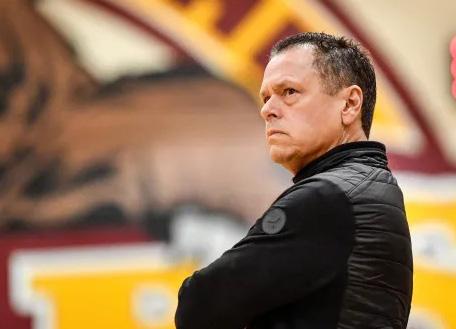

The Las Lomitas Elementary School District and Las Lomitas Education Association—the teacher’s union—were unable to come to a salary schedule agreement. At this time, LLESD teachers had been operating without a new salary schedule since the end of the 2022-23 school year. Negotiations continued to the 2024-25 school year.
98% of LLEA members voted to authorize a strike unless LLESD agreed to a 10% salary raise paid retroactively for the 2023-24 school year. The board was only willing to offer a 5% salary increase.
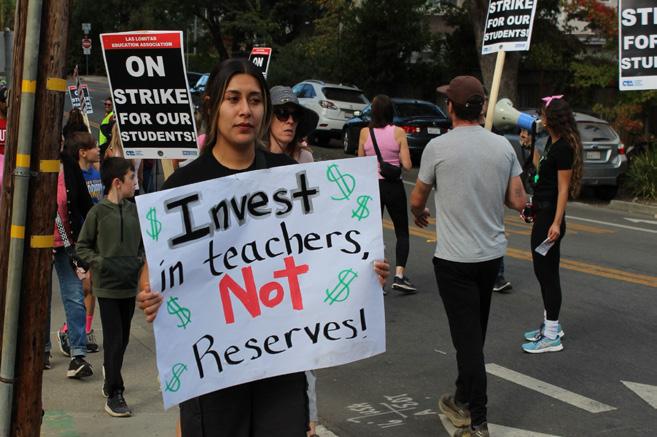
State appointees held a fact-finding hearing to attempt to break the impasse. Representatives from both LLEA and the district advocated for their side to a neutral third party. Once the report became available, LLEA would be legally allowed to strike.
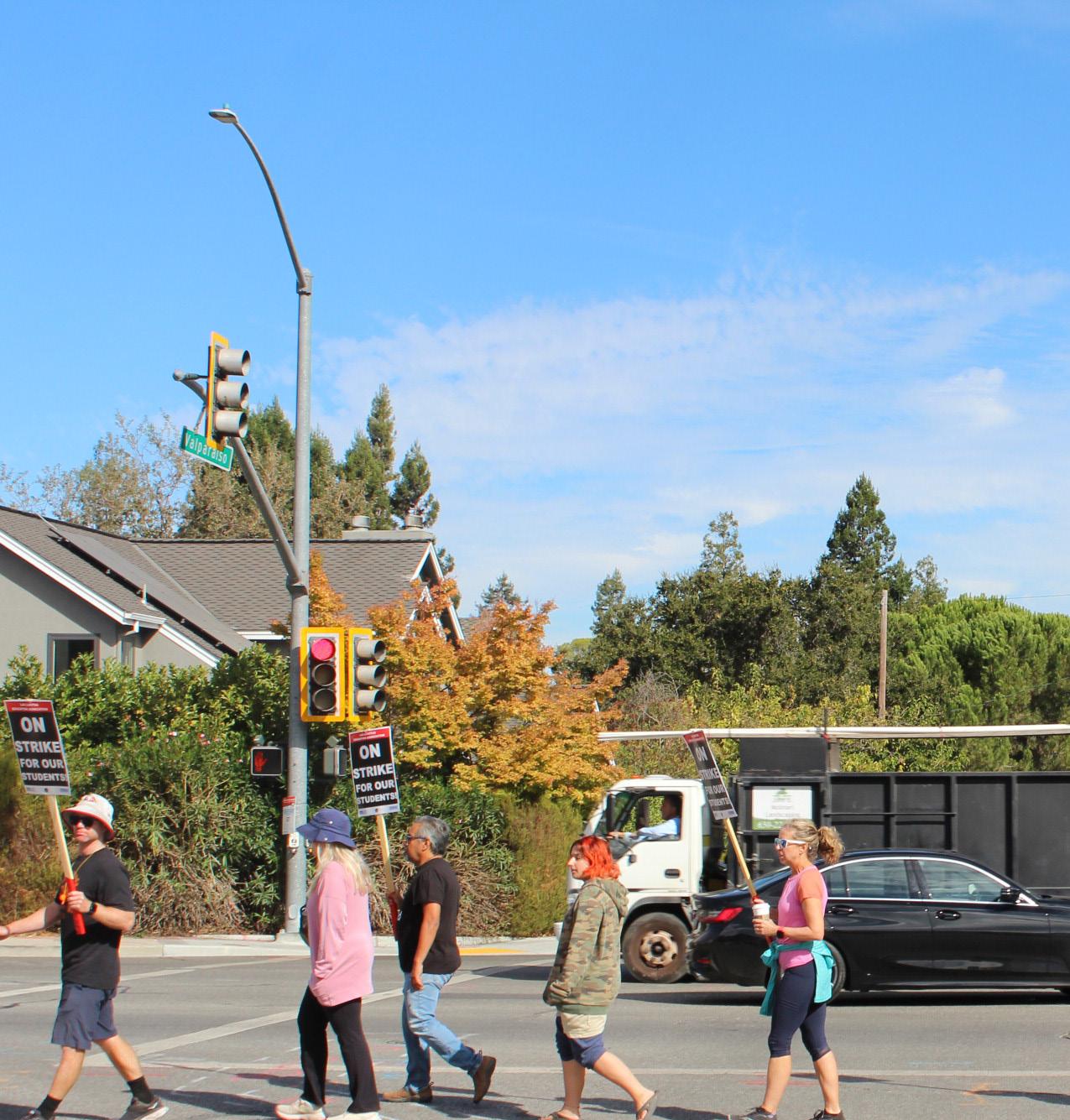

The district announced they were unable to come to an agreement with LLEA. Their offer included a 7% raise, paid retroactively, starting in 2023-24, and a 3% raise for ongoing 2024-25 salaries. LLEA countered with an 8% raise for 2023-24 and an 8% raise for 2024-25.
Teachers officially began striking as students were being dropped off. Numerous parents and staff members picketed on the sidewalk outside both campuses. On campus, the district spent over $100,000 to hire a magician and substitute teachers while students watched movies and played games, a move that received criticism from both LLEA teachers and parents.

26
The district and LLEA reached an agree ment on 2023-24, 2024-25, and 2025-26 salary contracts, ending the three-day strike.
LLESD issued a statement detailing the terms of the new salary contract. Educa tors and other classified staff will receive a 7% salary increase paid retroactively for the 2023-24 school year, an additional 5% increase beginning Jan. 1, 2025, and 4% salary increase beginning Jan. 1, 2026. Other benefits include the requested $3,358 stipend for all teachers, full health benefits, life insurance, and three additional instructional days for the 2024-25 school year.

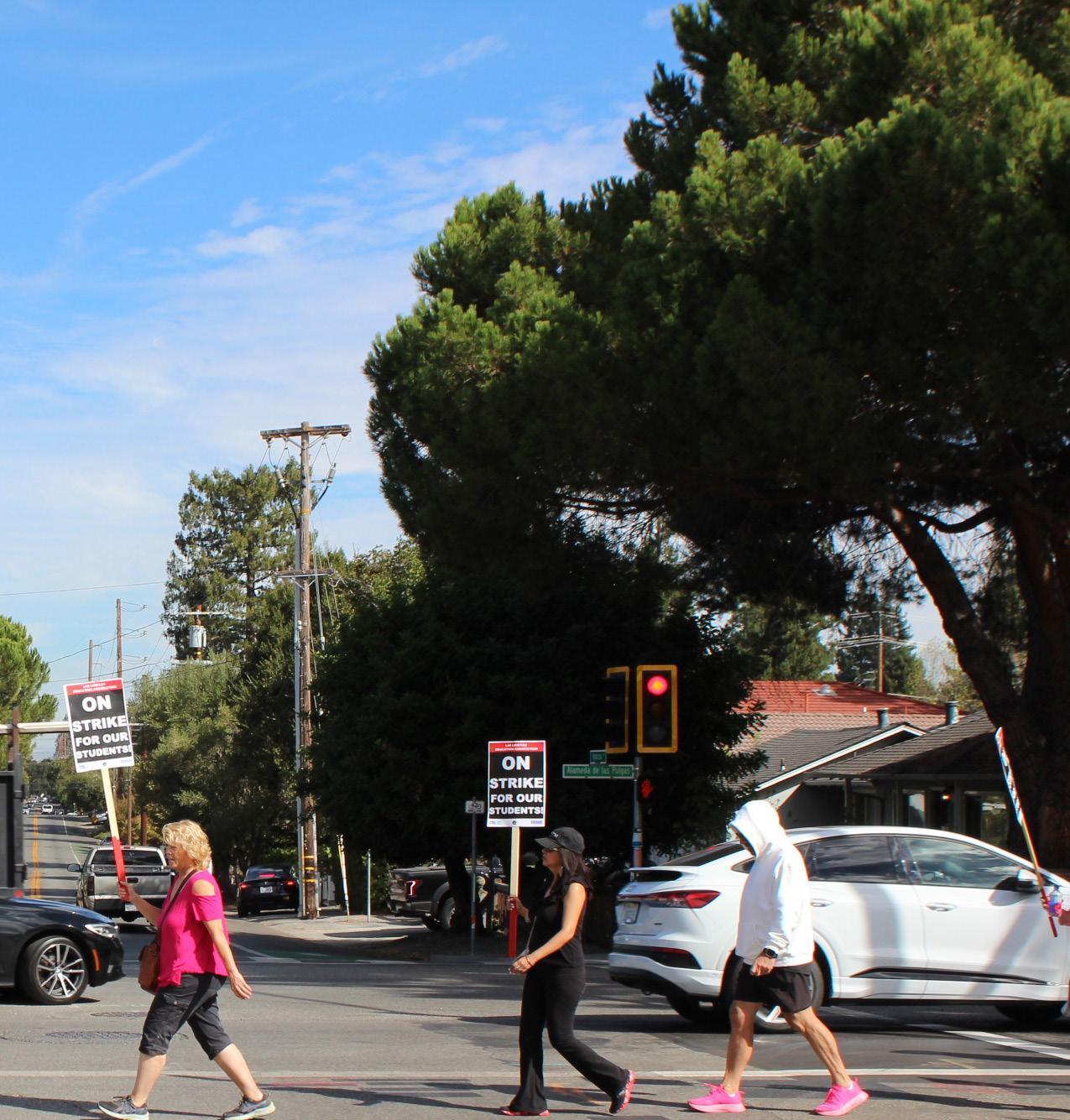

Emotions ran high on campus following the announcement of Donald Trump’s victory against Kamala Harris early morning on Nov. 6. Classrooms, hallways, and lunch tables were full of students discussing the results. The M-A Chronicle spoke with some students to hear their thoughts.
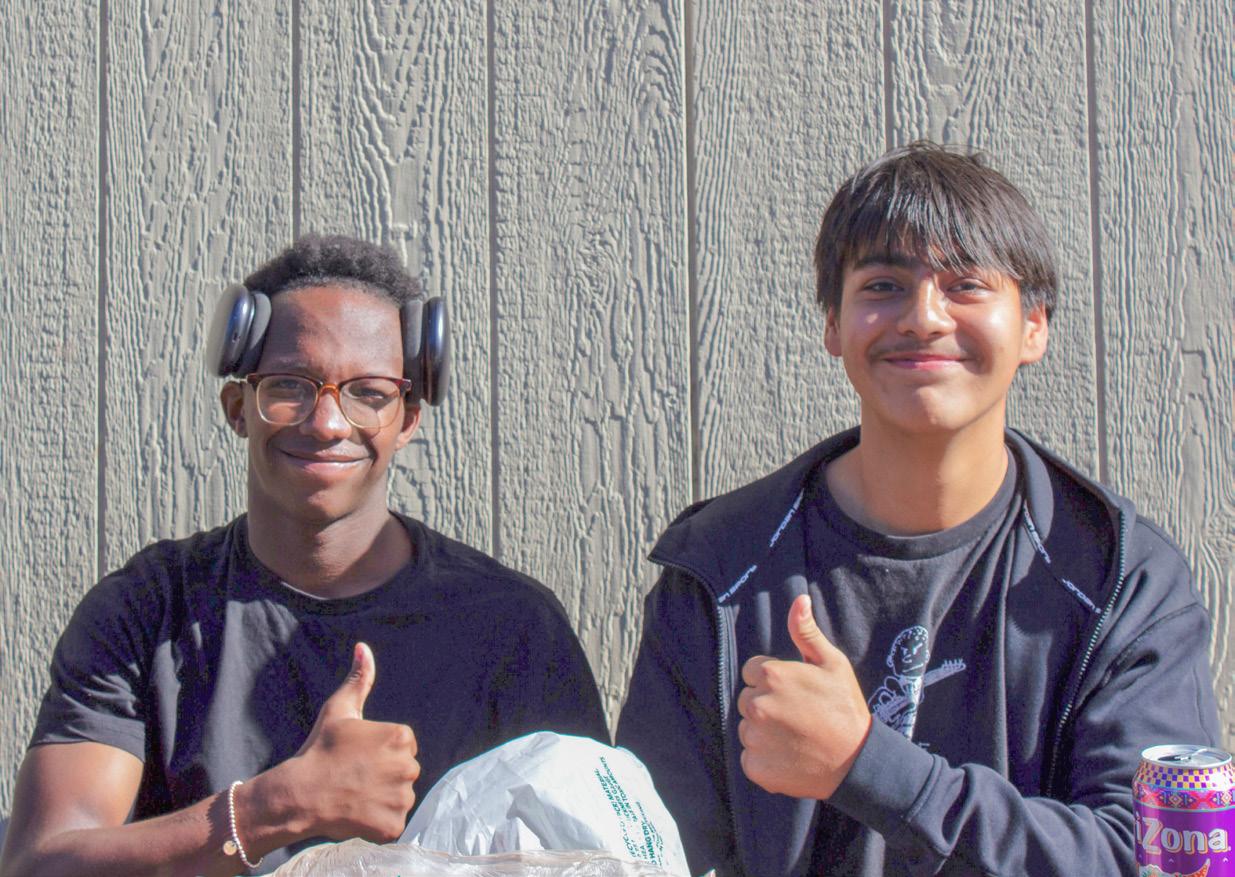
Freshman Julianne Hanson was surprised by Tuesday’s results. “I for sure thought that Kamala Harris would win. I was super surprised that Trump won,” she said. “I think people in California as a whole really believed that Harris would win because of her popularity with the younger generation.”
Hanson followed the election closely. “It was really, really sad. My mom was super disappointed,” she said.
Hanson expects news coverage will change over the next four years. “There’s going to be a lot more news on controversial policies that Trump will put into effect,” she said.
Sophomores CaDavion Ardoin and Nathan Frausto both predicted a Trump victory. “I knew Trump was going to win because most people didn’t like Harris, probably because she was a female. I know Trump was doing some bad stuff, but she was gonna let the border down,” Ardoin said.
Frausto watched the election on the news with his brothers. “I felt super happy. I knew he was gonna win when he had at least 220 electoral votes because Pennsylvania was huge for him to win, and Georgia as well,” he said.
Frausto feels optimistic about what the election means for the country’s future. “Trump is trying to make the economy better and lower gas prices,” he said.

Senior Camille Scott predicted a Harris victory. “I actually really believed that Kamala was gonna win. Maybe it was just the marketing that they had going on, but it really felt like Kamala had a lot of voters and a lot of support from the majority of the U.S. At least that’s what I saw from social media,” she said.
Looking ahead, Scott worried about the potential effects of the Trump administration on women’s rights and the economy. “For me, or just women in general, I pray for them. Especially the economy, too, because Donald Trump did horrible things to the economy,” she said.
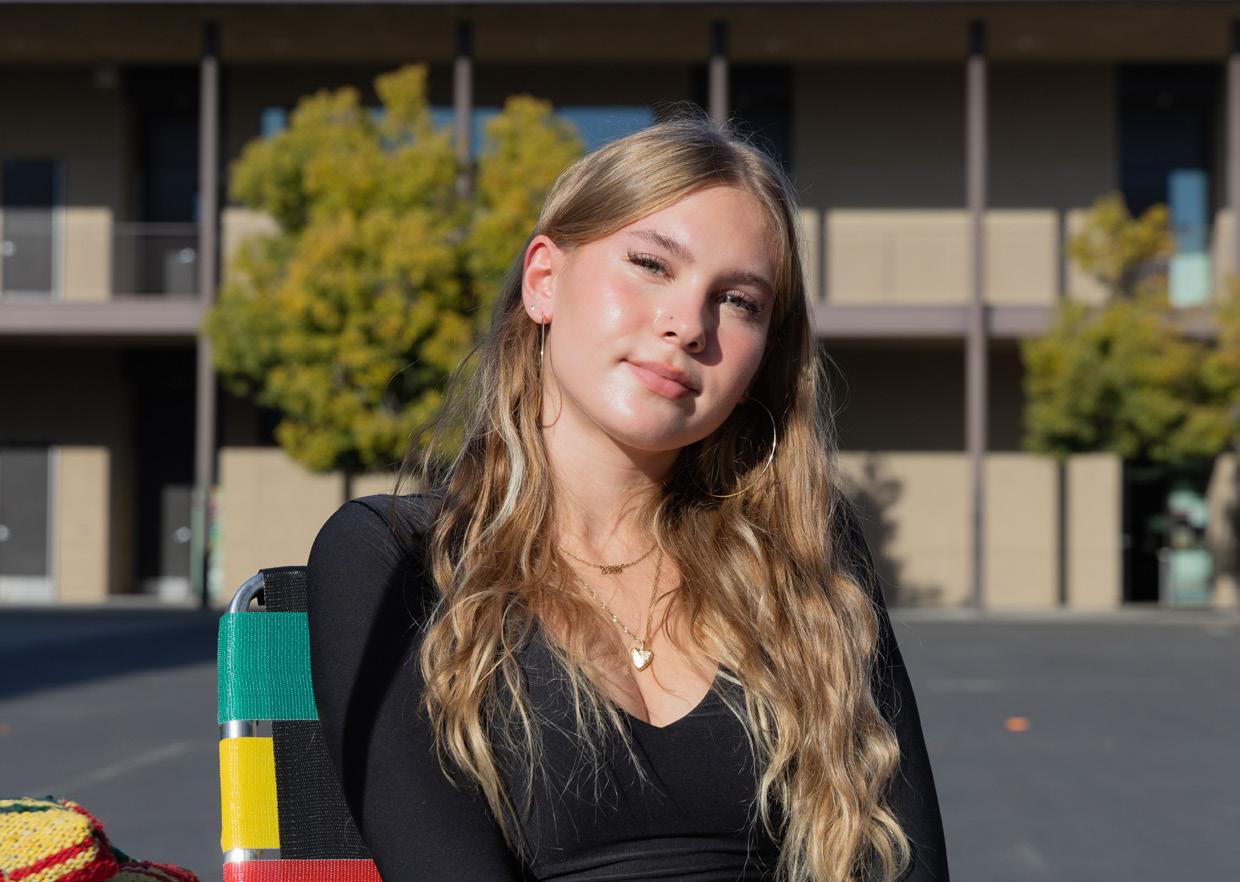
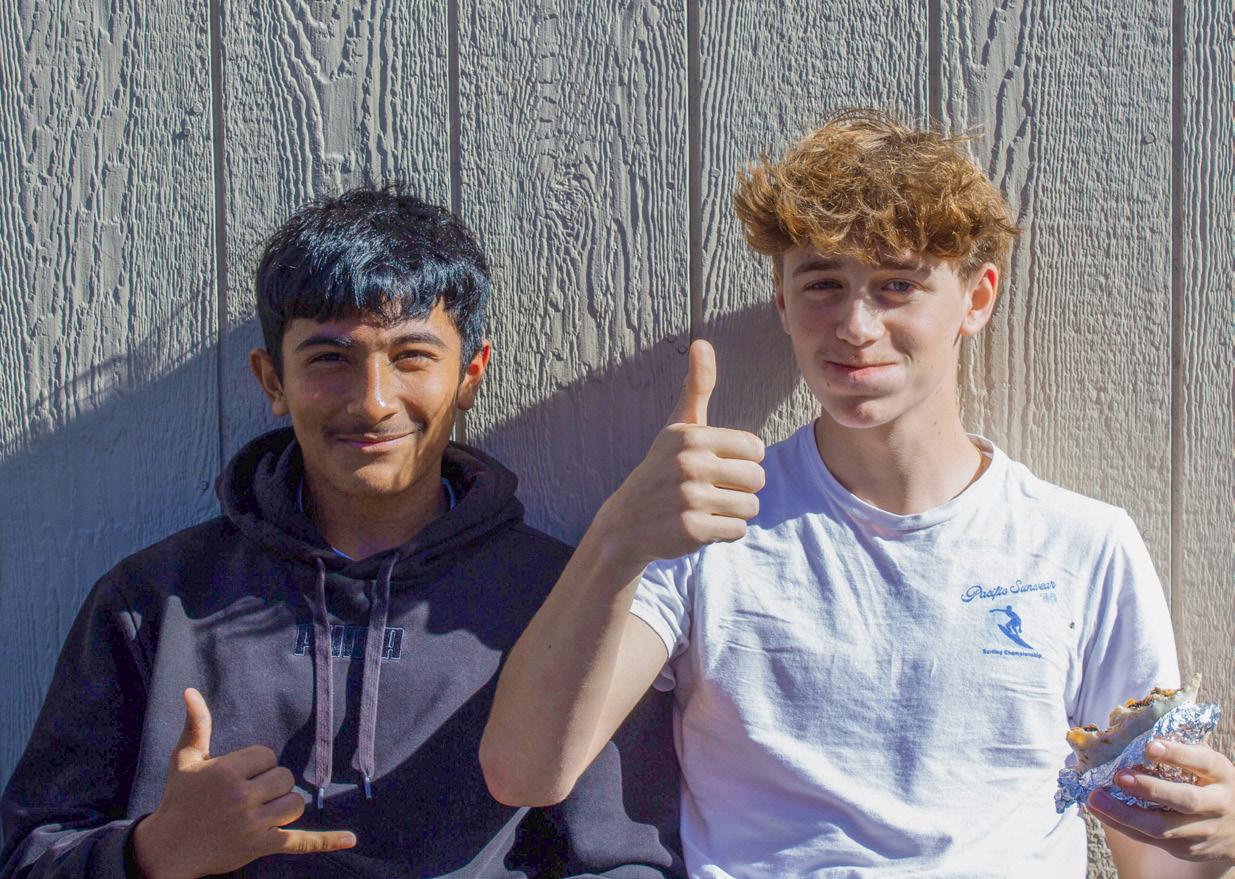
Senior Leni Fakava Ma wasn’t surprised by the Trump win. “Though I might not like his choice of words or his actions or him in general, it wasn’t shocking,” she said.
Fakava Ma noted that Trump’s win doesn’t mean all his policy plans will be implemented. “There’s still a lot of things that Trump has to do for his words and what he wants to be approved,” she said.
by Morgan Baudler designed by Caitlin Smith photos
Freshman Oscar Barron correctly predicted the results. “I wanted Kamala Harris to win, but I expected Trump,” he said.
He followed the election through TV and social media. “I watched a little bit at home from the news or from TikTok. I watch a lot of TikTok lives, and that’s how I got my information,” Barron said.
Freshman Hunter Doss put his feelings toward Trump’s win more plainly. “Trump’s a loser,” he said.
Barron was more optimistic about what the results would mean for the country. “I hope Trump can do everything he said he’ll do. I hope he brings gas prices down,” he said.
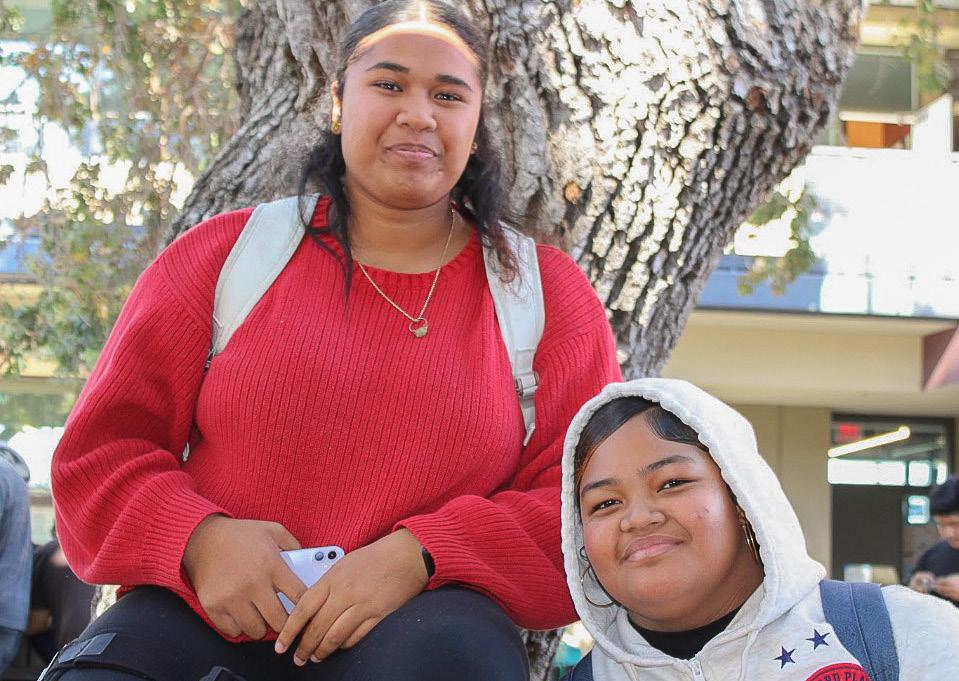

senior “Sweaters go well with this time of year.”


Henry Uili, junior “I get inspiration mostly from celebrities like Adam Sandler and my family because they just wear things that make them comfortable. ”
Elsie
senior “I get my inspiration from Pinterest I have boards for everything.”


Sian Leafa, senior “I like dressing for winter best because I can focus on staying warm.”

sister’s Hollister top
Anthropologie ripped jeans
Evan Threatt, sophomore “This is my comfy Friday outfit.”


Yandel Hernandez, senior “I’m really into the old detective sort of fashion.”


Target pullover sweater
Johanna Key, freshman “A knit sweater is one of my favorite things to wear during this season. Sweatpants and boots provide me comfort.”


Artificial intelligence isn’t the future, it’s the present—and M-A is falling behind. A.I., just like the calculator and the internet, is not a cheating device but a tool that can revolutionize learning.
M-A’s stated goal is to help students become “prepared, independent, and socially responsible individuals.” To do this, M-A must teach students how to use A.I. as a tool to maximize its benefits as a learning device while limiting academic dishonesty.
Currently, the District Academic Integrity Policy is the only District document mentioning A.I. use. The policy states that “using A.I. to create, write, or otherwise generate answers for an assignment without teacher authorization” is a form
of academic misconduct and plagiarism.
“Teachers decide if and when using A.I. for academic work is appropriate on an assignment-by-assignment basis. We have implemented a chart for teachers to use to indicate which level of A.I. use is acceptable for any given assignment,” District Instructional Technology Specialist Barbara Reklis said.
The District policy doesn’t guide teachers on how or when they should allow A.I. This could lead to some teachers banning A.I. entirely due to a lack of awareness of its potential benefits. In an attempt to provide some direction, the District emailed a chart to teachers that outlines the use cases for A.I. in classrooms. It appears as more of a notice rather than a directive, presenting ideas on how A.I. could

be used without encouraging teachers to actively incorporate it—plus, one email could easily disappear in the inbox of a busy teacher. “I wasn’t aware that there were guidelines sent out for teachers, maybe I missed the email,” social studies teacher Andrew Stuart said.
In its “Artificial Intelligence and the Future of Teaching and Learning: Insights and Recommendations” policy report, the U.S. Department of Education states, “We envision a technology-enhanced future more like an electric bike and less like robot vacuums. On an electric bike, the human is fully aware and fully in control, but their burden is less, and their effort is multiplied by a complementary technological enhancement.”
Our district policy should reflect a
“Explain to me why grass is green as if I’m a fifth grader. Respond in three sentences.”
“I’m writing for my high-school newspaper. I want to come up with 10 more interview questions for the varsity quarterback that have to do with things happening off the field. Here’s what I have so far: [insert what you’ve thought of]”
“I’m trying to find the PR’s for every athlete on my high-school track team. Tell me which sources have that information and link their websites for me.”
“I’m creating my first resume. Could you make a template for me that contains five different sections: education, extracurriculars, volunteer and work experience, and skills.”
“Here’s my paragraph about the Cold War [insert paragraph]. Bold all the punctuation errors for me to fix.”
vision similar to the DOE’s, recognizing A.I.’s advantages and encouraging teachers to find places where it’s appropriate.
“I’ve never done a whole assignment with A.I. I’ll ask it for help, but it’s always my own ideas,” an anonymous student said. The student expressed uncertainty about what “help” is allowed and what isn’t. “I don’t think I’m cheating. Nobody ever taught me how to use A.I. properly. I think that would be really helpful.”
It can be easy to ask generative A.I. for an answer, but students should also learn to use it to consolidate sources, create a framework, check grammar and punctuation, and explain complicated topics in easy words. And, as important as it is to teach the benefits, teachers must also warn students of the potential pitfalls.
While at times it’s good to give context on who you are at the start of a prompt, avoid first and last names, home addresses, and personal information related to you or others.
Instead, you could ask it to help you improve your work. “Read my English essay [insert essay]. The prompt was this [insert prompt]. How would I edit my essay to make it better answer the prompt. Put the cognitive load on me.”
You don’t know specifically where it got it from or how it synthesized the data so it’s not credible. Instead you could ask, “Give me the link to three sources that mention statistics about youth caffeine addictions.”
A.I. tends to hallucinate, or make stuff up. Chances are, most of the quotes it will give you will be completely made-up. Just don’t ask it anything related to this.
Instead say, “Here’s what I’ve written so far as a response to this question [insert your writing and the question]. Where do I go from here? What should I elaborate on or add? Put the cognitive load on me.”
For example, you should never use A.I. to find quotes, write summaries, write first drafts, or provide data because that’s when it tends to hallucinate—a term that describes when A.I. completely makes something up.
Whether students use A.I., Google, or a friend’s work, dishonest behavior won’t go away. “Cheaters are going to cheat,” Stuart said. “Imagine if we said nobody can use the internet and we’re not going to be able to send any emails because we might cheat. We have to find ways to embrace the next steps of technology, even if we don’t like the direction that it’s going.”
As students enter the workforce, they will have the freedom to use A.I. no matter their profession, and the reality is that
A.I. will be available to answer any question they ask. Without clear guidelines in place now, we risk students developing bad habits and unhealthy dependencies, while also depriving them of empowering ways to enhance their education. It’s time to prepare students with the skills and understanding they’ll need to succeed, rather than letting them fall behind in a world where A.I. literacy is essential.
by Alessandra Hartwig designed by Alessandra Hartwig













The Atherton, M-A, and Menlo Park Libraries each host their own seed libraries, offering a diverse selection of seed packets—from flowers and herbs to vegetables—free for anyone to take home and grow. The libraries aim to inspire all levels of gardeners, from seasoned enthusiasts to those looking to try their hand at gardening for the first time.


Books are nourishment for the soul, but some libraries provide nourishment for the body as well. The North Fair Oaks and East Palo Alto libraries offer free meals Monday through Friday. The East Palo Alto Library provides meals from 3:15 p.m. to 3:45 p.m., while the North Fair Oaks serves food from 3 p.m. to 4 p.m. These meal services are provided year-round and are part of a broader effort to combat food insecurity.


The Menlo Park Library hosts weekly Teen Film Fridays from 3:30 to 5:30 p.m. “We will be playing Mario Kart and Mario Party superstars. We have a Nintendo switch for the Teen Zone and we’re going to bring it out,” Hadrovic said. Free snacks are also provided for a night of fun. Additionally, both the Menlo Park Library and the Atherton Library offer collections of video games you can take home. The Atherton Library also offers a Switch console anyone can borrow. Atherton goes even further with technological entertainment. “We have karaoke machines that you can check out, which is extremely charming,” Atherton Library Youth Services librarian Lynne Fetter said.




Want to go hiking through redwoods or hang out on the beach? The Atherton, East Palo Alto, and Menlo Park Libraries all offer state and county park passes. “You can check state and county park passes out at the help desk, and it gets you free admission into state and county parks and vehicle tags,” Ella Hadrovic, the Menlo Park Library’s Teen Librarian, said. The same applies to museums. “We have this resource called Discover and Go,” Hadrovic said. “It gives you access into museums throughout California.”
by Arjun Mitra and Katelyn Chao
designed by Micaela Rubinsky

Knock out two birds with one stone: easily win your game of hide and seek and get through hot afternoon weather by submerging yourself in a cool oasis, perfecting your cannonball technique.
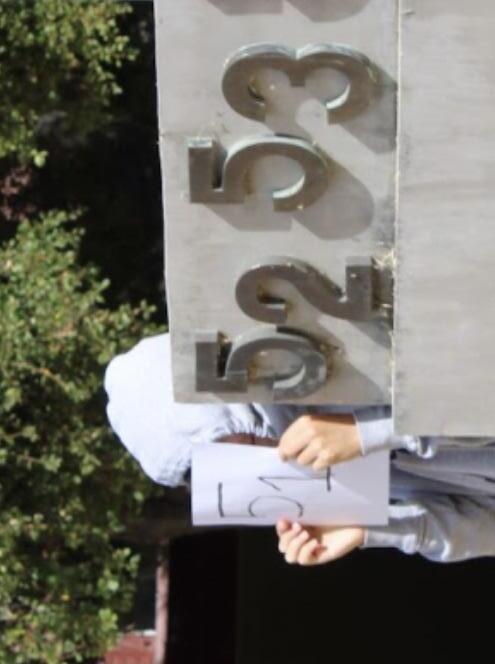
4 by Alisha Parikh-Briggs and Charlie Tobin designed by Celine Chien photos courtesy of Alisha Parikh-Briggs and Charlie Tobin
Honor the nonexistent M-A class of 1951 when you blend into the concrete slab between the A-Wing and the PAC Café. As your friends run around in circles trying to find your hiding spot, you’ll be right under their noses.


1
When you curl up under them, rendering yourself invisible, you are certain to enjoy the rest of your day in the fetal position. That is, until you find yourself right in the middle of football practice.

Simply wear a fashionable green outfit and curl up into a ball to blend into the upperclassmen sacred brunch and lunch spot. If you want to go the extra mile, we recommend green face paint. 3

Hiding as the bear, next to the bear is a masterstroke of stealth and strategy: if anyone catches you, they’ll probably just assume you’re on mascot duty, because who would ever question the Bear? It’s a foolproof plan.
designed by Ben Siegel

Jessica Pratt opens Here in the Pitch with an assertive, haunting tone: “Life is / It’s never what you think it’s for,” she sings. Her abstract lyricism, airy vocals, and nylon-string guitar have carved out a space in the indie scene, and her fourth album elevates that sound with otherworldly reverb, warm drums, and lavish strings. Like an Impressionist painter, Pratt immerses her listeners in amorphous scenes that prioritize emotion over precision. Here in the Pitch finds Pratt as elusive as ever, placing listeners in the middle of ambiguous narratives. “I soon should know what remains / I never was what they called me in the dark,” she sings, mystically warping time. –
Celeste Zucker

Blending her signature indie-pop with folk guitars and meditative songwriting, Lizzy McAlpine takes on toxic relationships, loss, and personal growth with her sophomore album. The project spotlights her soft vocals, with tender harmonies and satisfying buildups. The lively, clarinet-filled “All Falls Down” stands out on a record that tends to be quite subdued and unhurried, a quality that allows McAlpine to fully open up. “Someday, I’ll be able to let you go / Someday, you’ll come back, and I’ll say ‘No,’” McAlpine murmurs on closer “Vortex” before her band bursts into its own vortex of piano spirals and pedal steel twangs. Older truly sees McAlpine coming into her own. – Amari Witt
8 6 9 7 5

Billie Eilish’s third album is an intense buildup and crash of emotion, with Eilish’s poignant lyrics reflecting on guilt, manipulative relationships, and the emotional growth that comes from each. The album’s production is clean—bold when it needs to be and subdued when the story is—allowing Eilish to move through messy feelings with clarity and passion. This is most apparent on “L’AMOUR DE MA VIE,” where a casual backbeat swells into intoxicating electro-mania as Eilish’s feelings about a breakup transition from sorrow to being “so glad it’s over.” As she moves through themes of intimacy and insecurity, Eilish’s intentional production and forthright lyrics just keep getting better. – Huraman Orujov

Brat and it’s completely different but also still brat, Charli xcx
Like its cover art, this project completely inverts BRAT, taking skeletons of songs from Charli xcx’s original album and turning them into something entirely new. “360” hosts a conversation between Robyn and Yung Lean, “Talk talk” uses its original outro as a pre-chorus, and “365” goes from an insane club anthem to an even more insane club anthem. She finds closure to some of BRAT’s woes, like when a vulnerable Lorde joins her to “work it out on the remix” of the innovative “Girl, so confusing.” The project reinvents the remix album: rather than a cash grab, it’s a completely different and well-crafted piece of art. – Ben Siegel
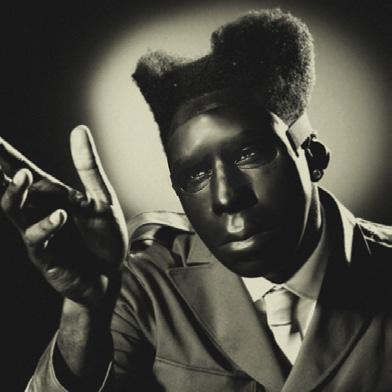
Tyler, The Creator’s seventh album illuminates his ever-evolving sense of self. While he’s not new to vehemence, the topics explored on CHROMAKOPIA—from aging and authenticity to paranoia—unmask the artist like never before.
Shameless moments like militaristic chanting on “Thought I Was Dead” bolster the aggressive hip-hop production Tyler is known for, whereas more emotional tracks like “I Hope You Find Your Way Home” find Tyler reflecting with newfound uncertainty and sophistication. This vulnerability is particularly apparent on “Hey Jane,” where Tyler admits he fears fatherhood: “I don’t wanna give my freedom up or sanitize it,” he raps. – Aliyah Chowdhary-Fitton
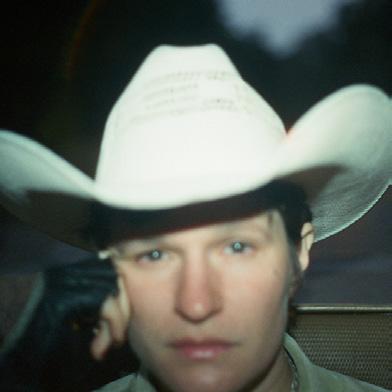
With an understated folk sound, Adrianne Lenker lets her lyrics take center stage on Bright Future. Her compelling imagery and storytelling focus on the mundane— often nature—to develop larger narratives. Lenker contemplates childhood instability on the piano-backed “Real House,” a one-sided relationship on the rugged “Vampire Empire,” and her relationship with religion on the minimalist “Candleflame.” Despite these heavy topics, she is overwhelmingly optimistic. “Though the distances traveled are expanding still / We meet in dreams by the lilac river,” she sings on “Cell Phone Says.” Above all, Bright Future is sensitive and warm, simultaneously comforting and refreshing. – Morgan Baudler

JPEGMAFIA is hip-hop’s biggest troll. “I’m so terminally online,” he admits between rapid-fire pop culture references and disses. While his lyrics are funny and delivered with force, what really makes JPEG’s music irresistible is his eclectic, singular sound. His samples are surprising—like a line from a Succession episode—and chopped into distorted, abrasive, and somehow satisfying songs. JPEG spends most of the album upgrading his preexisting sound with a new punk-rock hue, but the last four songs are a comedown from the high, switching out dense discordance for orchestral strings that prove his skills go beyond the aggressive sound he’s known for. – Ben Siegel

Imaginal Disk is an ambitious project that pushes pop in the right direction. The concept album follows main character True, who inserts a CD into her forehead to create an idealized version of herself. The CD rejects, and True is left grappling with her humanity. Imaginal Disk’s sound is as eccentric as its plot, never shying away from heavy synths, distortion, and maximalism. Its chaos, however, is balanced with a catchiness that makes each song enjoyable. On the standout opener “She Looked Like Me!” and throughout the record, the duo uses fantasy to explore very real topics. The album’s last track interpolates “She Looked Like Me!” for a satisfying, full-circle ending. – Morgan Baudler
4 3 2 1

Charm, Clairo
Clairo takes a playful approach to her third record as she explores the intimacy of falling in love. Created in collaboration with soul producer Leon Michels, Charm has a warm sound reminiscent of '70s greats like Carole King. Clairo herself fits right into the vintage landscape, delivering her recognizable airy vocals over floaty mellotrons and rich woodwinds. On songs like “Nomad,” she fantasizes about being wanted, willing to risk everything for a love interest who can break the monotony of daily life. The project’s whimsical instrumentation and intricate writing are more sophisticated than Clairo’s previous work, but they always maintain her effortlessly feminine charm. – Teagan Murphy

In a landscape of cautious, cookie-cutter pop, Charli xcx’s honest unraveling of the party girl persona makes BRAT one of a kind. She’s perfected her avant-garde pop sound full of modulated vocals and commanding synths that match her passion for a messy night out. But underneath this fierce exterior, BRAT rewards intentional listening with its distinctive, confessional lyrics on Charli’s inner turmoil and complex female relationships.
Charli admits to smiles rooted in insecurity and a fascination with flawed yet eternally en-vogue girls over loud claps and flashy synth stabs. The BRAT ethos is not full-fledged hedonism but a blend of boldness and vulnerability. On ballads “I might say something stupid” and “So I,” Charli’s poignant lyricism draws on tender moments like nervous drinking at parties and wishing she’d stayed with her late friend for dinner. Penultimate track “I think about it all the time” encapsulates BRAT’s superimposition by layering distorted percussion and dynamic vocal processing over contemplations about motherhood: “Would it make me miss all my freedom?” Before she can iron out an answer, Charli returns to her over-the-top sound on party-girl closer “365.”
This year’s recognition of Charli’s thoughtful messiness symbolizes a broader celebration of daring voices and ideas. With her singular hyperpop sound and unflinching commentary, Charli brings a remarkable, chic candor to music and pop culture as a whole. – Celeste
Zucker
See our full top 24 albums of the year, featuring Kendrick Lamar and Kali Uchis, and comment your own 2024 favorite:

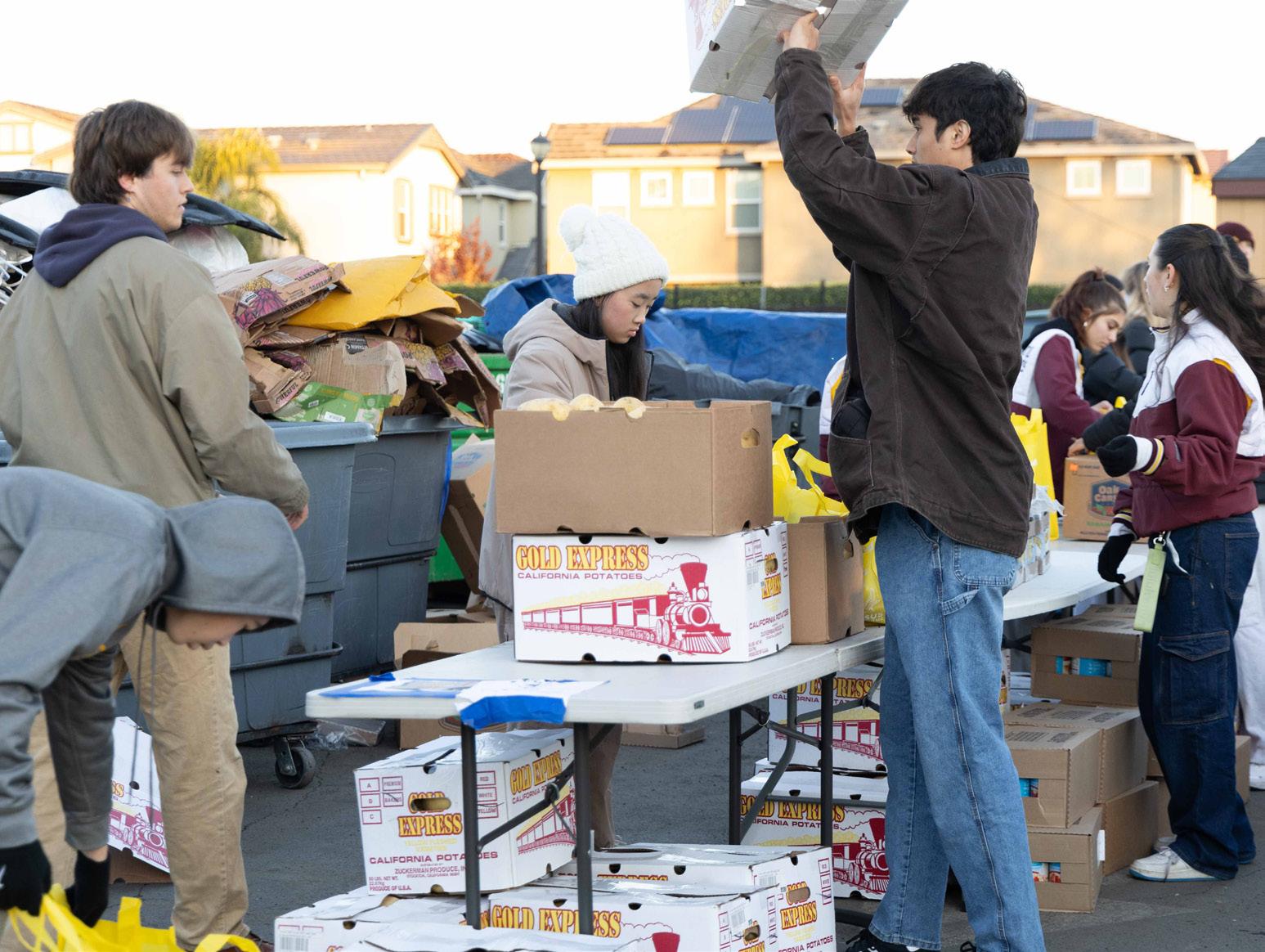

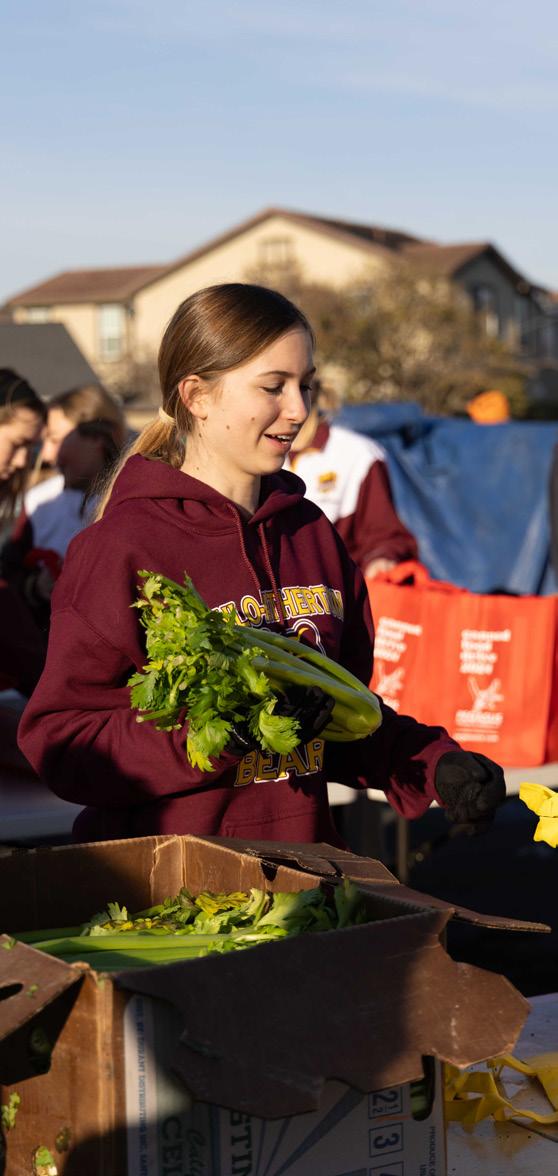

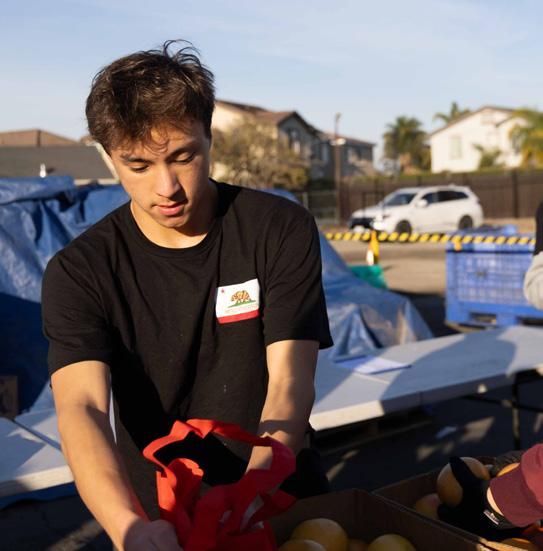
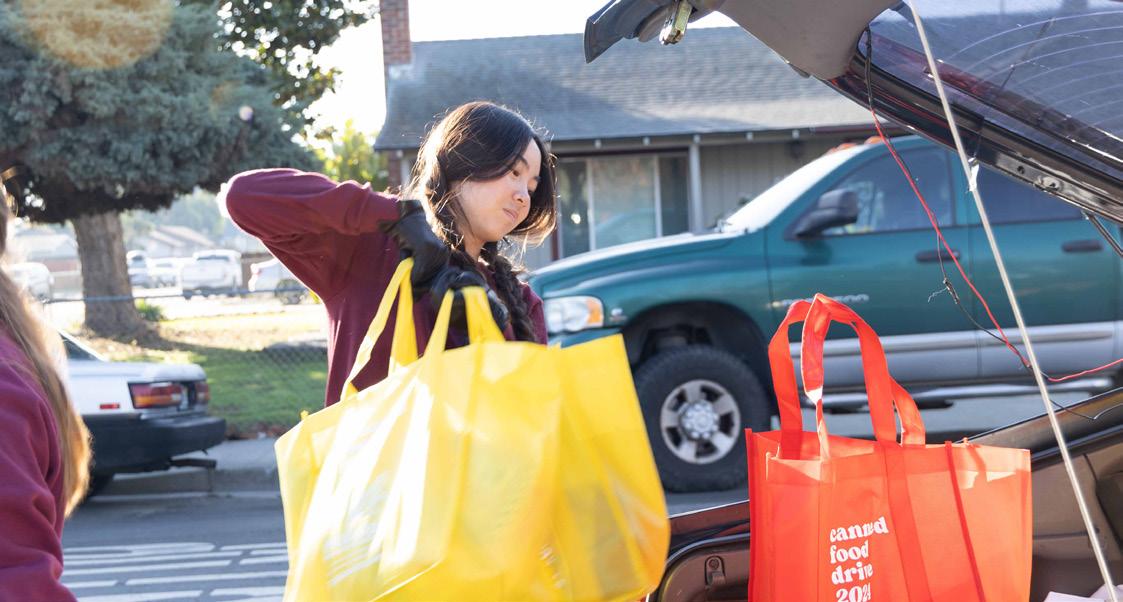
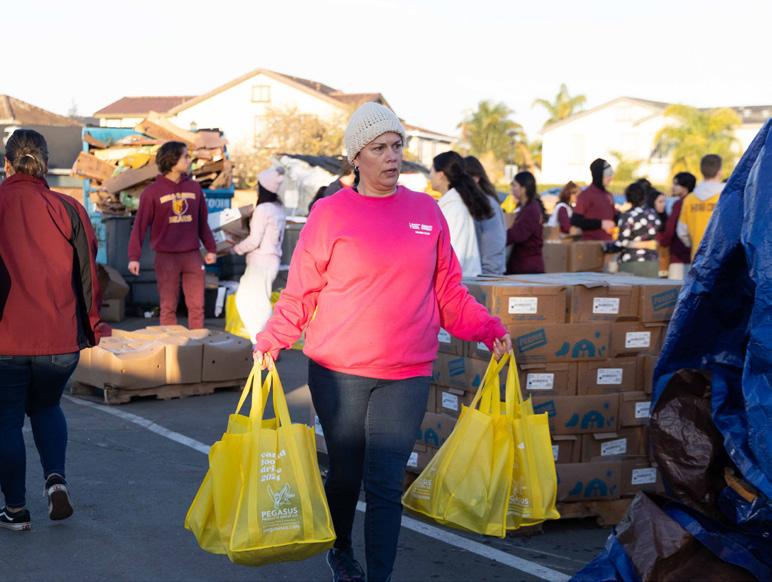


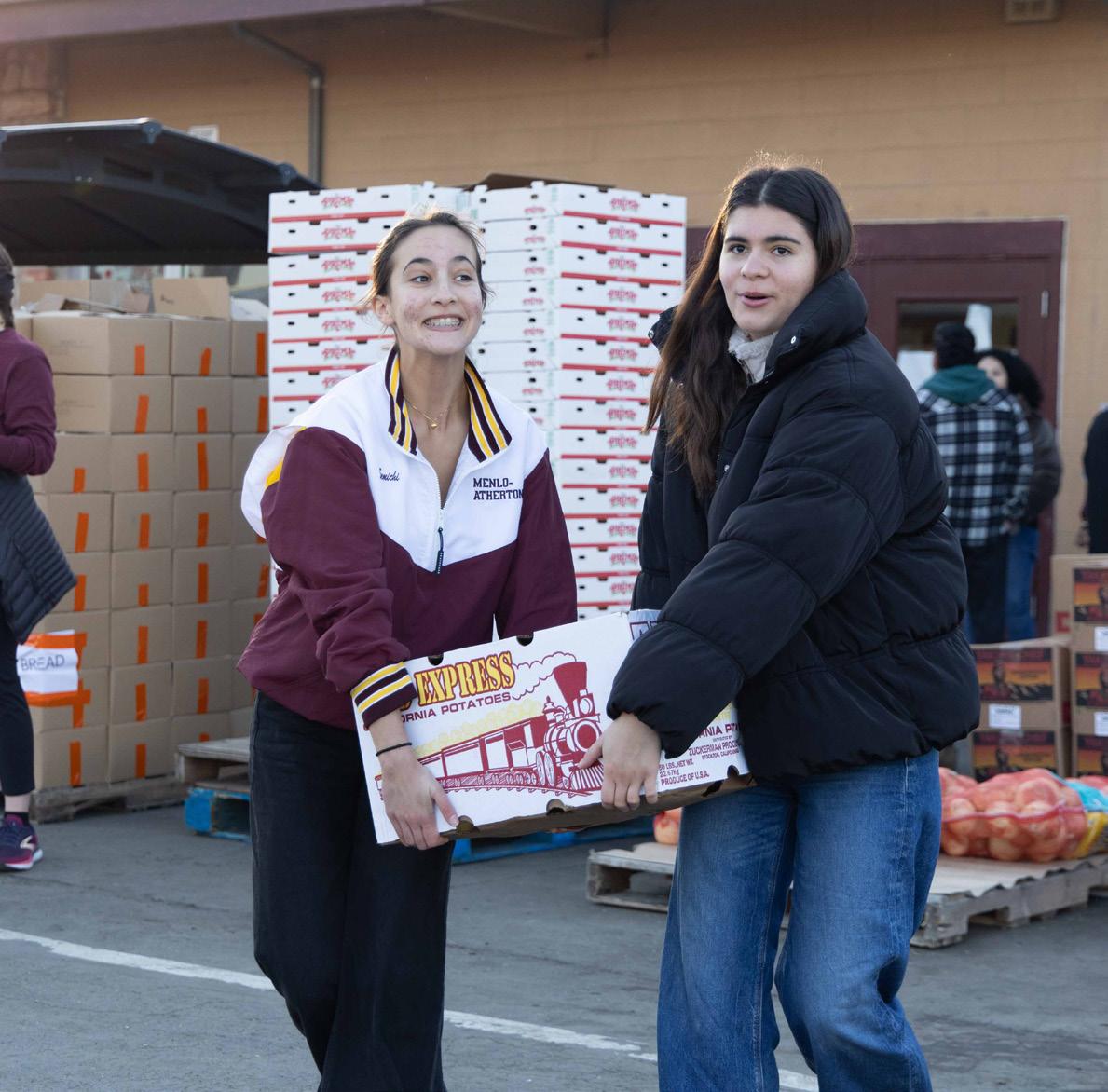

Students rushed to and fro in Ecumenical Hunger’s parking lot carrying thousands of red, yellow, and white bags for Distribution Day, or D-Day, on Saturday, Dec. 7. After collecting 250,901 pounds of cans and non-perishables throughout November and December, students gathered in East Palo Alto to distribute the goods to over 300 local families.
Months of careful organization by Leadership made this day possible. “It’s one of the greatest events in the Leadership program, and it’s just a really great opportunity to see where all of our hours spent canning, boxing, and sorting have gone,” Senior Class Advisor and Leadership student Addy McCombs said.
Leadership students and teachers arrived at Ecumenical Hunger at 6:15 a.m. to set up assembly lines and fill colored tote bags with food, like bread, milk, pasta, and fresh fruits.
“D-Day is one of my favorite days of the year. It’s so fun to see students at a different time while also being able to help the community. Whether it be hauling or packing bags, it always feels like I’m doing something different to help out,” Algebra teacher Laurel Simons said.
As more students and community members began showing up, people started filling the five rows of bags for easy access. The volunteers worked as a unit,
assembling the food and preparing for the long line of families that were already beginning to gather.
When distribution officially began at 8 a.m., students and teachers wheeled carts piled high with boxes of canned food and bags of packaged food to cars waiting outside. Groups worked separately to pack goods into bags, reload carts with food and toiletries, or deliver goods. “It’s a lot of fun to help out your community and see the happy faces of people when they get the food they need,” sophomore Calvin Blanford said.
Beyond M-A, people from the surrounding community also supported the cause—both Menlo Park and Redwood City mayors Cecilia Taylor and Jeff Gee showed up to help distribute food. “I do a lot of service through Boy Scouts, and this is just another opportunity for me to help out the community while also having time to hang out with my friends,” Woodside sophomore Lincoln Campbell said.
At 8:45 a.m., the assembly lines finished sorting all the food ready to be delivered. “My favorite part of today was our assembly lines. They were really organized this year, much more so than the past few years, meaning we could get the food out to the families faster,” senior D-Day Committee co-lead and ASB president Abbie MacLeod said. By 11 a.m., all the food was
distributed.
As for this year’s class competition, seniors collected the most cans with 112,139 pounds of food, followed by the juniors with 63,057 pounds of food. The M-A Chess Community topped the clubs’ leaderboard with a total of 17,253 pounds raised. For sports, dance team came in first, raising 18,045 pounds.
“Every year, I wish we could have more food and more options to give out,” junior and D-Day committee co-lead Auden Jones said, reflecting on this year’s D-Day. “Knowing that the food we spent the past month raising will only last these families two to three weeks puts into perspective how much more we could be doing. It’s still nice that we’re able to come together as a school and give back this way.”
by Weycene Yang designed by Becca Koenig photos courtesy of Lindsay Park and Weycene Yang
by


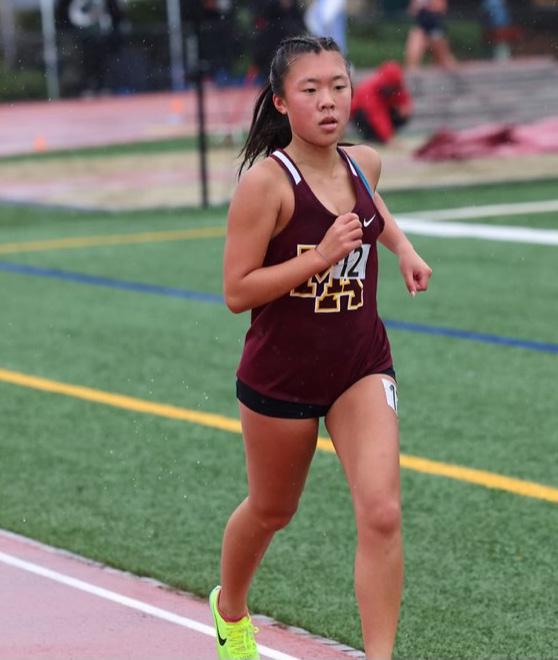
“Igot my MRI results back the night before PAL finals,” Sophie Chi said. “The doctor said my bone wouldn’t break after one race, so my mindset going into it was, ‘I’m just gonna race.’”
Chi began her exceptional running career on La Entrada’s cross country team. Going on runs with her father, a runner himself, inspired her love for cross country. She ran cross country for M-A all four years and is on her third year on the track team. Last season, Chi competed in the CCS championships and came in 23rd of 83 runners, qualifying for the State championships.
Chi’s running career hasn’t always been a jog in the park, though: she’s suffered shin splints and a femur fracture, among other injuries. Despite these setbacks, she sets the bar high for herself and her teammates.
“She works really hard, and she’s very quiet about it. Even when you give her credit for it, she just laughs it off,” senior cross country runner Claire Gong said.
Chi values the experience of running rather than getting caught up in the numbers. “My teammates are so much fun and I get to participate in fun races in a great community. I’ve been learning to appreciate that,” she said. “It’s nice if you get a personal record, but that doesn’t have to be your whole experience.”
Chi ended her junior season as one of nine M-A athletes to make it to CCS and State championships. “To make it so far after being injured was one of my biggest accomplishments,” Chi said.
by Isabel Habibi


Linda and Louise Gabele started playing rugby their sophomore year. The twins moved from New Zealand to the Bay Area during the COVID-19 pandemic, joined the Razorhawks, an East Palo Alto rugby club, and have since been committed team members.
“We’re half Tongan, and rugby is a sport that a lot of Polynesians play. We were introduced to it at a young age,” Linda said. “Since we already knew the game a little, we decided to try it out.”
In New Zealand, the twins were introduced to a “tag” version of the sport, which spiked their interest in playing for the Razorhawks.
Because rugby is a second semester sport, the twins eagerly took advantage of the opportunity to become football team managers this fall. This way, they could get involved with football and reset before the next rugby season.
“We had a lot of friends already on the football team, mainly the linemen, and we were always with them,” Linda said. “Most days after school we spent with the team until they went to study hall, and we always wanted to hang out longer. So we thought, ‘Oh, we should become team managers!’”
“It feels like we’re all a big family when they win and when we all cheer for each other,” Linda said. “It’s the memories that come with being on the sideline, it makes us feel more included.”
The twins encourage incoming freshmen to give rugby a try, especially those with a strong soccer background. “Show up and show how committed you are to show the coaches that you actually want to play,” Louise said.
designed by Bailey Lanier
by

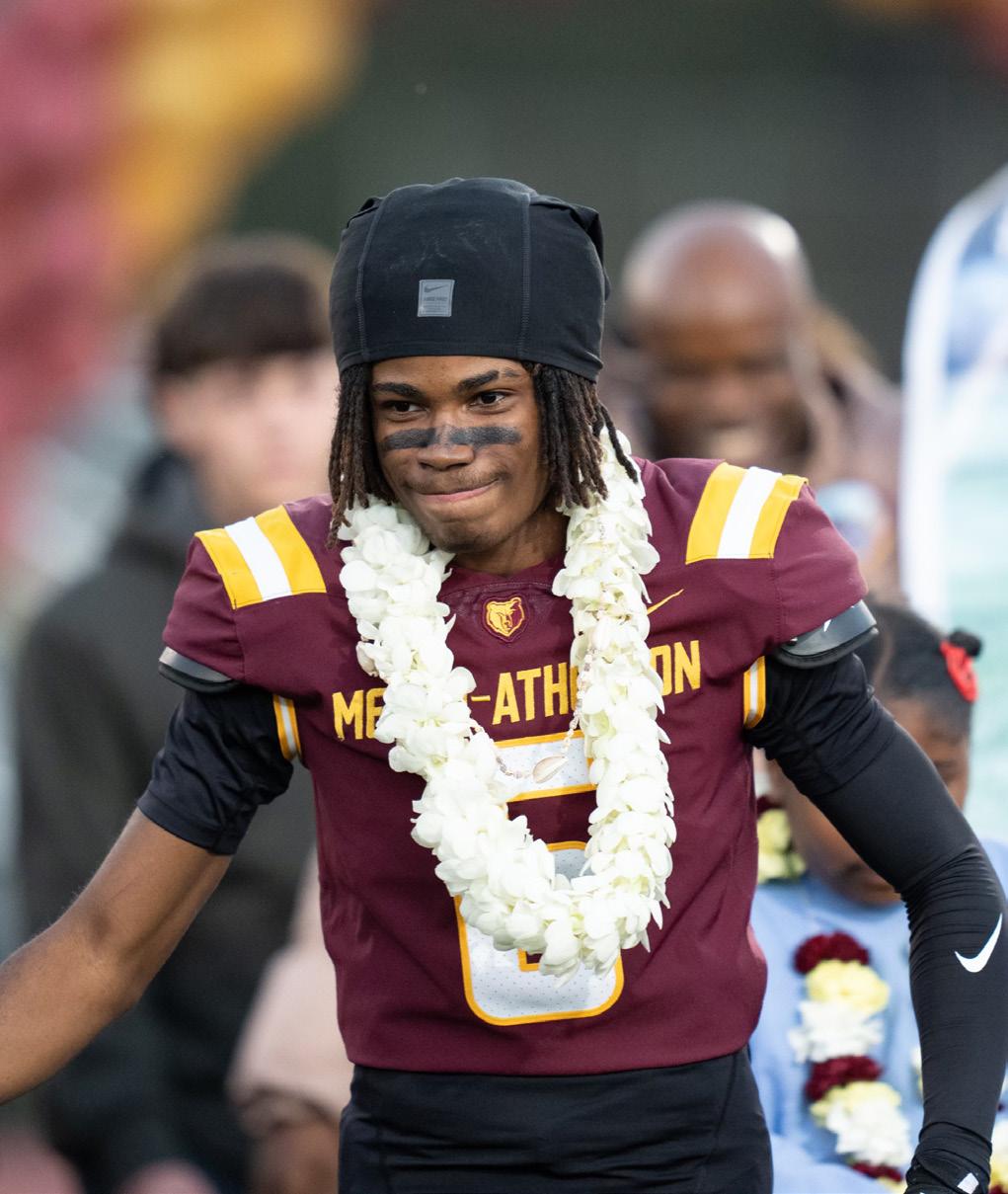
Kareem Franklin put on his first helmet and shoulder pads when he was seven years old. Beginning his football career on the Central Valley 49ers team in elementary school, Franklin has since evolved to playing competitively as a defensive back on the M-A football team.
By seventh grade, Franklin knew he wanted to commit to football throughout the rest of middle school and all of high school. Right before the COVID-19 pandemic, he joined the Menlo-Atherton Vikings, a competitive youth football team, where he was introduced to the physical aggression of football when his finger was crushed between his and his teammate’s helmets. “After that happened, I knew I was going to stop playing nice,” he said.
Franklin’s older brother, a former M-A football player who went on to be drafted into the NFL, has played a large role in Franklin’s involvement in the sport. “His experience has made me more knowledgeable in the recruiting process, and has given me a chance to improve my individual reputation as a football player,” Franklin said.
Another influential figure in Franklin’s journey has been his longtime coach Eric Washington. A cousin of New York Jets player Devante Adams, Washington has been pivotal in introducing Franklin to the intricacies of the recruiting process.
When asked about a lesson he carries with him from football, Franklin said, “It sounds harsh, but it’s ‘kill or be killed.’ Other teams are not going to go easier on you if you’re smaller or seem like you’re not the best.”
Franklin advises incoming freshmen interested in football to trust the process. “You have to keep training and stay consistent to see progress,” he said.
by Alessandra Hartwig photo courtesy of Jenny Friermuth


Casey Watkins has played water polo competitively since seventh grade and is now a star player for M-A’s varsity team.
Watkins began his freshman year playing for the junior varsity team and was pulled up to varsity for CCS. Now, Watkins serves as a role model for his younger teammates, but, in some ways, he feels the same way he did three years ago. “I have always looked up to the seniors, but even now as a senior, I still look up to all of my teammates,” Watkins said. “The seniors, juniors, sophomores, and even the one freshman on the team all continue to inspire me.”
This season, Watkins scored 10 goals against Hillsdale—a personal record. He also won five Player of the Game awards and First Team All-League, awarded to the best in PAL.
Watkins’ pride isn’t in his awards or records, but something bigger. “Water polo has brought me closer to so many people from so many different schools and places. Those friendships that I’ve made through the sport, those are the things I’m most proud of,” Watkins said.
“I love the sport so much, so I’ve rarely ever been unmotivated,” he said. In moments of doubt, Watkins remembers what his late teammate Dylan Scirpo expects of him. “This year, what’s kept me going is knowing that Dylan wouldn’t want me to slow down or back off; he’d want me to do the best I can and as we can as a program,” Watkins said.
“This season’s definitely been different than the past. Before, my goal was to win as much as possible. While that’s still a goal, I feel like now smiles are more important than wins,” he said.





by Alessandra Hartwig and Bailey Lanier
1. Would you still love me if I was a ___?
5. Greek letter before omega 8. Acronym for the diploma you receive graduating high school
11. A “lavatory skid”
15. Senior____ ; why you might not see your senior bestie for a week
17. What you might say to impersonate an owl
18. Combined with “baby”; What one might call Gracie Abrams because of her dad’s legacy
19. The 350,000 pound canning goal is equal to 175 of this unit of measurement
20. Reciprocal of sin you may have learned in math class
21. Exclamation of surprise when one sees the size of our student section
23. Acronym for “Level Of Effort”
24. Senior AP English class or how one might describe prom
25. ____ story (or with 29-across, 51-across, 63-across, 12-down, 25-down, 54-down, 60down as a song you might hear at 12-down)
26. What students don’t do when the fire alarm goes off
28. Non-AP advanced course
29. Party rock _____ (or with 25-across, 51-across, 63-across, 12-down, 25-down, 54down, 60-down as a song you might hear at 12-down)
32. Acronym for female partner
33. Common misspelling of many high school boys’ cologne
34. A popular musician, preceding a Thanksgiving side dish
36. Text abbreviation in response to “Love you”
38. Comes after “1-877” in popular non-profit jingle for kids
41. “Alright”
42. SOH, CAH, T__
43. Drake’s favorite chord, according to Kendrick Lamar
45. What a Valentine’s Day candy heart might say before “cute”; also popular texting slang
47. Something that might go up by 100 when you do something really cool
49. With 24-down, the first two words of a popular 2016 Emma Stone movie
50. With 46-down, common nickname for popstar who sings “Umbrella”
51. Some things you might send into space (or with 25-across, 29-across, 63-across, 12-down, 25-down, 54-down, 60-down as a song you might hear at 12-down)
56. Rebuttal to “Did you ChatGPT this assignment?”
58. Dreaded location for second semester PE
61. When you might hear crackly music over the loudspeaker
62. Prefix to vision in Will Ferrell Netflix Movie or the national currency in France
63. A ref’s prized possession (or with 25-across, 29-across, 52-across, 12-down, 25down, 54-down, 60-down as a song you might hear at 12-down)
64. Counterpart to exes
65. Something a creative student might do if they’re bored in class

1. “___, they don’t love you like I love you.”
2. Weather many UGG wearers dread
3. Acronym for “My bad, sir”
4. With 23-down; abbreviation for one of these on campus
5. Something you might analyze in your English class (a style of writing)
6. If repeated twice, the translation for “más o menos”
7. Charged particle
8. The type of shine a classroom projector emits
9. Acronym for “Education Industry”
10. Misspelling for online reselling platform 12. What you might buy tickets for on the Green or G-Wing (or where you might hear the starred clues)
13. One might ignore you to keep their _____ streak and their jawline chiseled
14. Something a music fanatic might look forward to at the end of the year
16. You might have a very long list of these by the end of a school day
22. M-A’s accepting environment allows you to be this version of yourself
23. You might want to rush to this after school if you’re parked in the third row
24. See 49-across
25. Top-hit by Los Tucanes de Tijuana, following the journey of the leading lady: ______ (or with 25-across, 29-across, 51-across, 63-across, 12-down, 54-down, 60-down)
26. If you’re not a morning person, you might have to do your homework in these hours

27. End of a verb or where you might find many freshmen at lunch
30. A pregame tradition the football team recently brought back
31. “Test Blind”
35. “_____ Cleour”
37. Major road near M-A with an alternate ending
39. Could also be paired with 50-across for wthe same effect
40. Acronym for Taylor Swift’s third studio album
44. Popular probiotic drink ____pop
46. See 50-across
47. Perfect garlic-mayo dip for your truffle fries
48. Acronym for “All teachers actually want laughter”
52. What you might say to your friend when they cooked on an exam
53. Toad in spanish
54. Megan Thee Stallion diss track (and with 25-across, 29-across, 51-across, 63-across, 12down, 25-down, and 60-down as a song you might hear at 12-down)
55. Olivia Rodrigo’s debut album
56. “No, thanks”
57. M-A’s special needs program
59. Misspelling for 47-across
60. What your grade might be after a rough final (or with 25-across, 29-across, 51-across, 63-across, 12-down, 25-down, 54-down as a song you might hear at 12-down)
61. Acronym for assignments done outside of class


@machronicle @machronicle @themachronicle